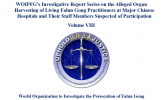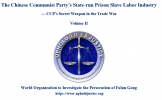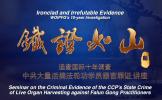The Chinese Communist Party’s State-run Prison Slave Labor Industry (2nd part)
Please see related links:
Foreword
By investigating the Chinese Communist Party’s (CCP) prisons and now-abolished labor camps forcing Falun Dafa (i.e. Falun Gong) practitioners to produce slave labor products, World Organization to Investigate the Persecution of Falun Gong (WOIPFG) uncovers the CCP’s serious violation of human rights of enslaved individuals. It also brings to light the economic aggression against the international community and its destruction of human moral conscience. The slave labor victims are mainly Falun Gong practitioners, as well as human rights advocates such as lawyers with a sense of justice.
The large-scale production and circulation of these ultra-low-cost and extremely competitive slave labor products have made a great impact on the international labor market and economic market. The result is bankruptcies of a large number of businesses in the same industries. At the same time, the large number of people who lost their jobs as a result of this unfair competition, have become a serious burden to the international society and foreign governments, disrupting the normal order of the market economy.
More severely, the existing slave labor enterprises in China are wholly state-owned. they are established by using the human and material resources of all Chinese prisons. They have been transformed from the previous prison enterprise system into a state slave labor industry with a unified and militarized management by the Chinese Communist Party, directly led and guided by its judiciary system, and with the financial support from the state. According to the incomplete data obtained from our investigation, there are at least 681 state-owned prison enterprises in 30 provinces, municipalities directly under the central government’s control and autonomous regions in China. Since these enterprises have a centralized and unified management, their manpower resources are slave labor with almost no cost; they challenge the individual’s physiological and psychological limits and use torture to coerce the detainees to perform slave labor; there is the massive scale of human resources in prisons, now-abolished labor camps and brainwashing centers; and there are the CCP’s economic information resources, and the support from the state economic and trade diplomacy and preferential policies, a super-strong economic and trade entity beyond any restriction has come into being. It serves as an enormously powerful strategic weapon for the CCP’s international trade and economic aggression. As a result, in the entire world, no company can compete with the CCP’s slave labor enterprises. Regardless how many tariffs the United States imposes on China, the CCP’s slave labor industry will not be significantly affected.
The scale and production capacity of these enterprises and their subsidiaries are astonishing. For example, Sichuan Heqiang Group Co., Ltd., affiliated to the Sichuan Provincial Prison Administration Bureau, has at least 43 subsidiaries. The general manager of the company, Zeng Yongzhong, is also the deputy director and communist party committee member of the Sichuan Provincial Prison Administration Bureau. Sichuan Heqiang Group Co., Ltd. was established as a parent company in November 2011, and subsequently, the 43 prisons across the province all set up its subsidiary companies. As of December 31, 2017, the total assets of these prison enterprises in Sichuan Province reached 3.485 billion yuan.
Among them, Sichuan Xinlei Industry Co., Ltd., one of its subsidiary companies, is affiliated to Sichuan Leimaping Prison, has more than 1,100 police guards and soldiers of the People’s Liberation Army, and is capable of detaining 100,000 inmates. Located in the deep mountains at the border of Sichuan Province and Yunnan Province and surrounded by 133 square kilometers of rolling hills, the prison has 230 detention sites on different hill tops and the highest hilltop site confines more than 23,000 inmates. Its business operations include electronic equipment manufacturing; hydropower generation; housing services; textile and garment processing; manufacturing of construction materials, plastic products, daily commodities and household goods; retail of prepackaged foods and dairy products; and retail of cigarettes and cigars.
The CCP refers to this slave labor system in its prisons, now-defunct labor camps and detention centers as “reform through labor”. Due to the lure of huge profits from slave labor products, the slave labor industry has been becoming more and more developed. Especially since the CCP began suppressing Falun Gong practitioners in 1999, the scale of the CCP’s slave labor production has expanded rapidly. With the CCP’s “reform and open-up policy” and its accession to the WTO, in order to highlight the prison economy’s “competitive advantages” in the trend towards economic globalization, in 2003, the Chinese Communist Party separated its prison enterprises from their affiliated prisons and set up new wholly state-owned prison enterprises, their subsidiaries and branch companies. The legal representatives of these prison enterprises at all levels are Communist Party officials, thus forming the CCP’s state slave labor industry that is planned, coordinated and managed in a highly militarized and unified manner, from the CCP Central Committee to its grass-roots levels.
The information collected by WOIPFG indicates that severe abuse of slave labor exists in the prisons and existed in the now-abolished labor camps of the Chinese communist regime. All detained Falun Gong practitioners have suffered from severe slave labor. The enslaved victims also include human rights activists and righteous lawyers, who have the courage to speak for vulnerable groups and fight for justice. The victims are aged between 16 and 70. Within barbed wires and prison walls, many of them are forced to work painstakingly between 12 and 19 hours a day. When the "production tasks" were heavy, they would have to "work overtime" for even more hours; sometimes they cannot sleep for several days in a row. The enslaved individuals endure unspeakable and unimaginable physical and mental sufferings, adverse living conditions, punishments and even torture, which challenge their physiological and psychological limits. Many of them have contracted various diseases or become incapacitated due to persecution; some have even perished under persecution.
On June 18, 1998, at its closing ceremony of the 86th session in Geneva, the International Labor Organization formally passed the ILO Declaration on Fundamental Principles and Rights at Work, which points out clearly the need to eliminate “all forms of forced or compulsory labor”. As a participating member of the International Labor Organization, instead of carrying out the Organization’s provisions, China has adopted many preferential policies for the businesses within its labor camp and prison systems, while stimulating and encouraging the growth of such enterprises and attracting foreign investments for them. Protected by such preferential policies, businesses located in the economic development zones of some provinces and cities even try to attract foreign investments by directly advertising the cheaper labor from the imprisoned individuals, which has resulted in an alarming expansion of slave labor enterprises. For example, Hangzhou Z-shine industrial Co., Ltd. now has 38 prisons as its production units, with more than 40,000 prisoners manufacturing fabrics and clothes for exports, and 90 percent of their products are sold overseas.
This investigative report represents only the tip of the iceberg of the slave labor reality under the Chinese communist regime. The problems it identifies, however, have an impact on the whole society, which is of deep concern. What is happening in the communist China is not only a violation of the enslaved laborers’ human rights, but also a devastating destruction of human moral conscience.
In reality, the slave labor industry under the Chinese communist regime survives and grows with the international community’s collaboration. WOIPFG published two reports on November 7, 2003 and April 5, 2004 respectively, revealing the hidden slave labor production under the Chinese communist regime and its impact on international markets. In addition, WOIPFG submitted a report more than 10 years ago to the US government, requesting a ban on the import of certain products made by slave labor, however, our efforts were hampered. A great number of jobs in many countries, including some in the United States, have been lost to the slave labor industry in China, thus financially aiding the Chinese communist regime’s persecution of human rights. In other words, to keep a close watch on human rights issues in China, the international community not only has a moral obligation, but also directly affects its own economic interests and social security.
Table of Contents
IV. Slave Labor Industry in Mainland China: Forms and Scale
(I) Prisons with Slave Labor Production in the Name of Companies
(II) Prisons, labor camps and detention centers that produces slave labor products and the companies that commission their services
1. Slave Labor Products Made in Prisons and the Commissioned Companies
1) Hangzhou Z-shine industrial Co., Ltd. relies on 38 prisons for production
2) Zhejiang Province No. 1, No. 4, No. 5 and No. 7 Prisons and Quzhou Haolong Clothing Co., Ltd.
3) Jiamusi Prison and Zhejiang Goodbrother Shoes Co., Ltd.
4) Liaoning Province Women’s Prison and related companies
5) Shanghai Women’s Prison and related companies
6) Heilongjiang Tailai Prison and South Korean brand Missha
7) Shanghai prisons, Shanghai forced labor camps and related companies
8) Collaboration between Shanghai Tilanqiao Prison and Shanghai Soap Co., Ltd., Shanghai Jahwa Corporation
2. Slave Labor Products Made in Forced Labor Camps and the Companies that Commissioned them
1) Hebei Province Women’s Labor Camp and Related Companies:
(1) Hebei Yikang Cotton Textile Co. Ltd.
(2) Hebei Jinhuan Packaging Co. Ltd.
(3) Inner Mongolia Yili Industrial Group Co., Ltd. and Mengniu Dairy (Group) Company Limited
(4) Hebei Electric Power Transmission and Tuoms Labor & Service Company in Shijiazhuang
2) Shanghai Qingsong Women’s Forced Labor Camp’s Third Brigade and Related Companies
3) Chongqing Women’s Forced Labor Camp, Chongqing Chang’an Automobile and Yaxuan Group Co., Ltd.
4) Shaanxi Province Zaozihe Forced Labor Camp and Xifeng Brewery
5) Shanghai Forced Labor Camp and related companies
6) Xinkaipu Forced Labor Camp in Changsha City, Hunan Province and related companies
7) Shandong First Women’s Labor Camp and Beijing’s Shuanghe Pharmaceutical Co.,Ltd.
8) Masanjia Men’s Labor Camp and “Weishi (Wirge)” Down Jackets and “Bosideng” Down Coats
9) Masanjia Women’s Labor Camp
10) Former Hebei Women’s Forced Labor Camp Processed Arowana Brand Rice Packages
11) Baoding Balizhuang Labor Camp works with Baoding Jiuwang Plastic Packing Co., Ltd.
12) Xinjiang Wulabo Labor Camp, Xinjiang Women’s Labor Camp, Xinjiang Changji Labor Camp, Xinjiang No.3 Prison, Xinjiang No.5 Prison work with Xinjiang Tianshan Wool Tex Stock Co., Ltd.
(1) Xinjiang Tianshan Wooltext Stock Co., Ltd.
(2) Xinjiang Changji Labor Camp
3. Slave Labor Products Made in Detention Centers and the Commissioned Companies
1) Shanghai Baoshan District Detention Center and Zhejiang Red Dragonfly Footwear Co. Ltd., Jiuguang Department Store
2) Qian’an Detention Center, Hebei Province and Changli County Hat Factory, Qinhuangdao City
4. Slavery products without identified brands or companies
1) Sichuan Province Women’s Prison
2) Yunnan Province Second Women’s Prison
3) Kunming City Forced Labor Camp
4) Hewan Forced Labor Camp in Wuhan City
5) Heizuizi Women’s Forced Labor Camp in Changchun City, Jilin Province
6) Yunnan Province Women’s Labor Camp
V. Where Slave Labor Products are Distributed and Sold
VI. The Dangers and Detriments of Slave Labor Products
- Slavery products severely disturb the global market and interfere with the global financial order
- The temptation of enormous profits from slave labor products further deepens the persecution of detainees and even kills them.
- Products of slave labor pose serious threats to consumers’ physical health
1) Sanitary conditions of slave produced products
2) Comparison of product safety between slavery products and regular products (source: Minghui.org)
3) Health conditions of slave laborers
Partial results from tests of detainees on contagious diseases
VII. Why does the CCP Vigorously Develop the Slave Labor Industry?
1. It uses slave labor to persecute people of faith
2. To obtain tremendous profits
VIII. Conclusion
IV. Slave Labor Industry in Mainland China: Forms and Scale
There are mainly two forms of slave labor products in mainland China’s prisons, labor camps and detention centers. The first one is the slave labor production carried out directly in the name of an enterprise; the other one is attracting domestic and foreign companies to outsource their production to prisons and other places with cheap slave labor.
(I) Prisons with Slave Labor Production in the Name of Companies
The following table lists some of the jails recruiting business in the name of enterprises.[181] All products manufactured by these types of companies are slave labor products.
For example, Sichuan Deyang Prison produces plush toys under the name of 9.5 Factory in Deyang City, Sichuan Province. The products are exported to Europe and the United States, and are also labeled in English, French and German. In fact, they are authentic slave labor products. Shanxi Women's Prison produces gift bags, Chinese knots, handmade car seat cushions, and butterflies, sweater weaving, handbags, hook wigs, file boxes, etc., which are produced under the name of Shanxi Chemical Factory.
The Shayang Xinsheng Brick and Tile Factory in Hubei Province, located in Fanjiatai Prison, Shayang County, Hubei Province, has a registered capital of 3.98 million yuan and 800 employees. It mainly produces and sells bricks and tiles. At the same time, it is a branch of Hubei “Shayang Farm Processing Factory”, which shares many slave labor businesses of “Shayang Farm Processing Factory”.[182]。In January 2011, it began to process a large number of Jiefang brand shoes for the 3517th Arsenal in Yueyang City, Hunan Province. Fanjiatai Prison only processes the upper part of the shoe, and the rubber sole is processed by another prison. The processing machinery and equipment were moved from the Arsenal to the various Supervision Areas of Fanjiatai. Each Supervision Area completed some of the operations of the assembly line. For example, the fourth Supervision Area was responsible for punching the eyes and rivets. The first, second and third Supervision areas work in the canteen of the fourth supervision area. Sewing machines, punching machines, cutting machines and other mechanical equipment are placed in the canteen to form a workshop that can accommodate 2,000 people. The shoes produced are exported overseas.[183]
Yunnan Guangming Phosphorus Chemical General Factory is affiliated to the Anning Prison of Yunnan Province (the third prison of Yunnan Province). It is located in Songhua Road, Lianran Town, Anning City, which is known as the “Dianzhong Treasure”. It was established in 1965, and promoted to a large national enterprise in 1995. It is one of the key enterprises in China's phosphorus chemical industry. With a fixed asset of 120 million yuan and more than 320 technicians, it was identified as one of the top 100 key enterprises and top 100 industrial enterprises in Yunnan Province 1989 and 1992 respectively. The products are exported to Japan, South Korea, Southeast Asia and other places. The domestic market covers Henan, Hebei, Shandong, Gansu, Xinjiang, Heilongjiang and other provinces and counties.
Hebei Women's Prison (formerly Shijiazhuang Prison) produces exported clothing under the name of Jintai Industrial Co., Ltd. The products include a variety of apparel such as black multi-pocket pants, Mona Lisa long skirts, etc., and exports to the United States, Canada, and Australia. It also produces many jeans. The Women’s Prison and the Women’s Labor Camp in Hebei Province also processes and packages “disposable sanitary chopsticks” commonly used in hotels. In 2008, after the scandal of Sanlu tainted milk, unscrupulous manufacturers began colluding with prisons to produce full-text (English) packaging bags imitating foreign dairy products packaging.
Please see Attachment III for a list of prisons, their enterprises and the products they produce.
The following are some of the slave labor products or related images produced by the above-mentioned prisons.
Figure 4.1-2 Slave labor products manufactured in Fanjiatai Prison in Shayang County, Hubei Province.
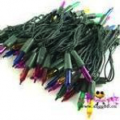
Figure 4.1 Christmas lights (exported to the US)

Figure 4.2 Crystal stones (polished)
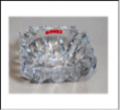
Figure 4.3 Some of the slave labor products made by Hubei Province’s Shayang Farm Processing Plant (i.e. Shayang Prison Administration Bureau)[184]




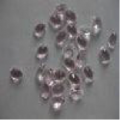
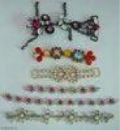





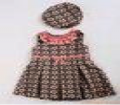


Figure 4.4 Brand-name products manufactured by Shandong Province Xing-Ye Development Co. Ltd. (Shandong Province Women’s Prison)





Figure 4.5 Logo of Taiwanese children's apparel brand ABC/Charles River Apparel sports casual wear logo / Hansi brand down jacket logo
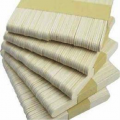
Popsicle sticks

Lobster claw clasps

Disposable non-woven underwear

Army boot uppers
Figure 4.6 Some of the slave labor products produced by Jilin Province Shiling Cement Co., Ltd.

Imperial Palace carpet
 Tibetan sheep wool carpet
Tibetan sheep wool carpet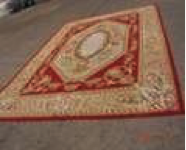 Rug
Rug
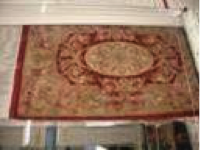
Carving
Figure 4.7 Some of the slave labor products (from various incoming raw material produced by Jilin Province Haoyu Industry and Trade Co., Ltd.(belonging to Meihekou Prison).
(II) Prisons, labor camps and detention centers that produces slave labor products and the companies that commission their services
1. Slave Labor Products Made in Prisons and the Commissioned Companies
1) Hangzhou Z-shine industrial Co., Ltd. relies on 38 prisons for production
Hangzhou Z-shine industrial Co., Ltd. has been relying on production from prison garment factories in various places. It has been processing and exporting garments for enterprises all over the country for many years.
The company has about 3,500 employees.
Prisons involved in the production: 38 prisons with over 40,000 garment processing workers.
Total factory area: 100,000 square meters.
Producing locations: Garment factories operated within the prison systems in Hangzhou, Jinhua, Quzhou, Huzhou, Ningbo, Suzhou, Nanjing, Nantong, Zhuzhou, Yueyang and other places.[185] Due to this special system, its processing fees are low, with an annual output of 5 million pieces and a revenue of 50 million yuan. Exported products account for 90% of the total production.
Processing projects:
(1) Knitted garments processing including men’s polo shirts, short-sleeved shirts, long pants, shorts,beach shorts, tank tops, and T-shirts; women’s T-shirts, trousers, and blouses; sweat suits, tweed coats, business suits, outdoor jackets, cotton-padded clothes, Down jackets, hard collared shirts, raincoats, uniforms and other four season clothing processing.
(2) Commodity processing, including bedding, curtains, shower curtains, pillows, cushions, reflective vests, etc.
(3) Luggage and suitcase processing, prison garment processing.
The major products include regular woven garments, regular knitted garments and denim garments.
- These products are mainly exported to Africa, Asia (except China), Central and South Americas, Japan, South Korea, Eastern Europe and the Commonwealth of Independent States, the Middle East, North America, Oceania and Western Europe.[186]
- Major customers: Major customer groups: foreign buyers / foreign companies in China, domestic trading companies, domestic entity brands, domestic wholesalers / retailers, domestic network operators / e-commerce businesses, domestic supermarkets.
(4) Other products: baby/children’s clothes for 0-6-year-olds, down jackets and pure cashmere clothing for 0-16-year-olds. The company’s own brand is PEPEVEGA [PPVG]. Kids’ down jackets with licensed brands including BOBDOG (a Japanese famous cartoon character; the licensing also includes BOBDOG baby clothes and BOBDOG children’s cashmere clothing), DISNEY (including three major brands of Mickey, Winnie the Pooh, and the Disney Princess series), Teletubbies, Looney Tunes/Tweety/Tom and Jerry (licensed by the US Time Warner, Inc.).
The company has clearly stated in its investment-attracting advertisement:
“Dear business owners, if you have the ability and the channels to receive large orders, what will you do? However, you hesitate to take these orders, due to the size of your factory and the number of employees you have. You are afraid of being unable to fulfill the orders, but you are also afraid of wasting the opportunity. What can you do? You can consider working with the prison system’s garment factories and assign the large orders to us. We can complete your orders with low processing fees, high quality products and high efficiency! Our company relies on prison processing , and can be responsible for producing your order.
The advantages of the prison system’s clothing processing factories:
1. High credibility – state-owned work units with a serious work attitude;
2. Low processing fees – due to the special system (slave labor), the price is more competitive;
3. Quality stability – with ISO 9001:2000 quality system certification, ERP control for the entire process, and production organized in strict accordance with the contracts;
4. Timely delivery – With 38 prisons and more than 40,000 processing workers, we are especially suitable for urgent and/or large orders. The prison system’s garment processing factories are a bit special, but compared with other manufacturers, we have great advantages: 1) There are over 40,000 absolutely stable workers, and all of them have received specialized technical training; the factories implement the militarized management; there are various advanced equipment including automatic flatcars, button sewing machines, electric scissors and steaming machines. 2) Since specialized technical training is provided to the workers, we can undertake the processing of all kinds of clothing such as down jackets, cotton-padded clothes and other outdoor sportswear.”[187]
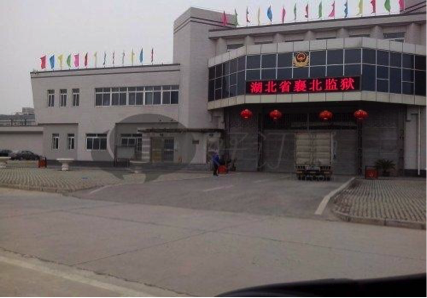
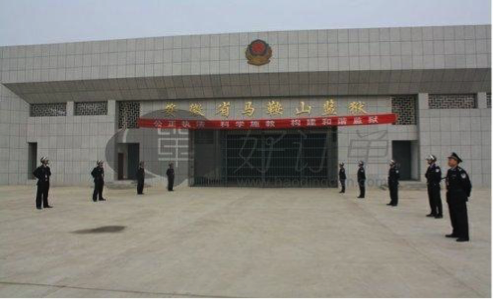
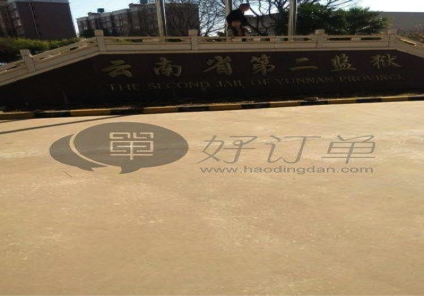
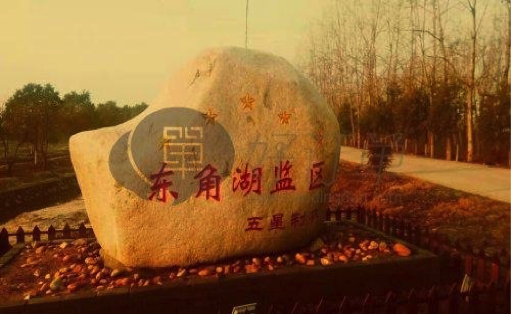
Figure 4.8 The following are photos of several processing sites of Hangzhou Z-shine industrial Co., Ltd.
Hangzhou Z-shine industrial Co., Ltd.
- Address: 21st Floor, Section A, UDC Times Tower, Hangzhou
- TEL: 86-571-81101588 / 86505081
- FAX: 86-571-81101599
- After-sales services QQ: 1146639341
- E-mail: support@zshine.com.cn
- Website: http://www.pepevega.com/
2) Zhejiang Province No. 1, No.4, No. 5 and No. 7 Prisons and Quzhou Haolong Clothing Co., Ltd.
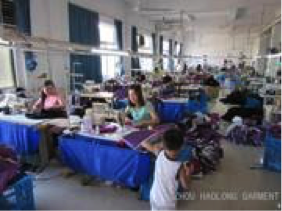
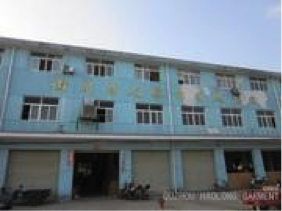
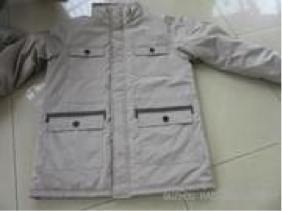
Figure 4.9 Workshop and sample product of Zhangzhou Haolong Clothing Co., Ltd.
Quzhou Haolong Clothing Co., Ltd. has clearly stated in its advertisement (seeking clients for cooperation) that the company’s orders are mainly filled by their own factories and several prisons. The investigation has confirmed that the prisons processing clothes for this company include Zhejiang Province No. 1, No. 4, No. 5 and No. 7 Prisons, with over 20,000 workers. Below is a letter from Johnny, the company’s contact person, to introduce the company:
Please see the attached file for factory profile:
The majority of the orders that our factory receives are FOB US dollar total distribution orders, which account for 70% of the total production. External processing contracts are 20% and the other 10% are domestic sales orders.
(1). Our factory mainly produces woven garments: down jackets, cotton-padded jackets, outdoor jackets, work uniforms, windbreakers mountaineering outdoor clothing, casual pants and other products.
Major markets: France, Europe, and the United States.
Brand clients:
French brands- Father & Sons, Armand Thiery, Cyrillus, Harrington, Galeries Lafayette, Bayard, ODB and American Vintage;
US brands- Allen USA and Micros.
The annual garment output: 200 million pieces.
(2) Currently the factory is mainly 70% French market, 20% US market, 10% domestic market, and the US market is only doing several brands under the COSCO (China Ocean Shipping Company) framework.
(3). Our commissioned Prisons:
Zhejiang Province No. 1 Prison: Prison terms of over 20 years and life imprisonment;
Shilifeng Prison (belongs to Zhejiang Province Prisons No. 4, No. 5 and No. 7, with a total of around 12,000 prisoners, there is a personnel turnover due to short prison terms): From 5 to 20 years of imprisonment.
The total number of prisoners is around 20,000, and they are all in a healthy state.
The above is a general introduction. If needed, we will always keep in touch.
Best Regards,
Johnny
Tel: (0086)570-3866602
Mob:(0086) 189 0581 1375
Skype: johnny08601
Quzhou Haolong Clothing Co., Ltd.
Zhejiang Jiusheng Import and Export Co., Ltd.
Table 4. The following table shows the types of products and contact information listed on the website of Quzhou Haolong Clothing Co., Ltd.
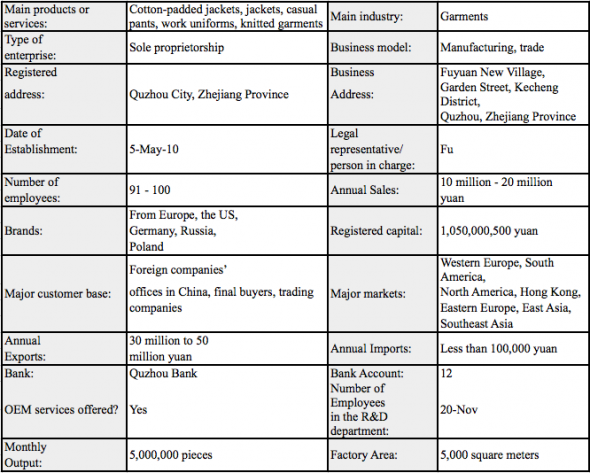
- Address: Fuyuan New Village, Garden Street, Kecheng District, Quzhou, Zhejiang Province, China
3) Jiamusi Prison and Zhejiang Goodbrother Shoes Co., Ltd.
In 2011, Jiamusi Prison forced the detainees at the first, initial, fifth and eighth prison wards (the 9th ward was closed) to manually make men’s and women’s leather sandals, semi-finished sneakers (without soles, which are added after being exported to Russia). The manufacturer name marked on the shoes is Zhejiang Goodbrother Shoes Co., Ltd. Their English trademark is Coollook. Please see below for the trademark and product information.[188]
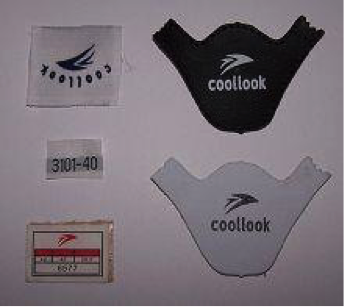
Figure 4.10 trademark and product information
The shoes’ raw materials are from Dalian. The plate number of the freight truck, which is used to transport raw materials and semi-finished shoes, is Hei C89165 (黑C89165), indicating that it’s from Dongning County, Mudanjiang City in Heilongjiang Province. Dongning County is one of the counties with a relatively large trade volume with Russia. The truck driver’s cellphone number is 13946375897.[189]
The following is the production information regarding some shoes manufactured during a certain period:
Item No. A585, black, 700 pairs;
Item No. K232, brown, cream, 900 pairs;
Item No. 0587, cream, black, 1,400 pairs;
Item No. 8211, black, 300 pairs;
Item No. 2731, black, 600 pairs;
Item No. 5023, brown, 2,000 pairs;
Item No. 5025, black, white, beige, 2,600 pairs;
Item No. 3101, blue, black, total 10,000 pairs;
Item No. 6577, black, white, total 3,000 pairs;
Item No. 6378, white, total 3,000 pairs.
Two kinds of glues are used to manufacture the shoes: One glue is white, called 103 powder slurry, with a pungent smell, which irritates and hurts the eyes; the other glue is yellow, which also has a pungent odor and causes people’s hands to peel after being in contact with it.[190]
4) Liaoning Provincial Women’s Prison and related companies
Liaoning Provincial Women’s Prison has cooperated with Basic House (South Korean clothing brand), Bang Bang (South Korean clothing brand), ABC (children’s clothing brand), Semir (clothing brand), KFC, McDonald’s, Shenyang Taoli Food Co., Ltd, Holiland (pastry brand), and Shenyang’s Yisheng Health Appliances Development Co. Ltd.The former third division (renamed the first division in 2011) of Liaoning Provincial Women’s Prison did textile processing in the name of “Shenyang Ningda Garment Factory” (for details, please see the list of “Prisons with Slave Labor Production in the Name of Companies”). Except for the hospitals and kitchens, all other 13 divisions have manufacturing workshops. New and juvenile prisoners mostly work on producing cotton swabs. The seventh division (with nearly 500 inmates) make a large amount of slave-labor products for Basic House, Bang Bang, ABC and Semir, generating an annual net profit of over 30 million yuan (4.5 million USD) .[191] The ninth division has paper product manufacturing workshops, mostly making fast-food boxes for KFC and McDonald’s, as well as gift boxes for Shenyang Taoli Food Co., Ltd and Holiland. The fourth team of the tenth division works on making cosmetic products, as well as doing related processing work, including filling, lidding, numbering, boxing, labeling, sealing, packaging and warehousing the cosmetic vials/boxes. [192] Other slave-labor products include sweaters, handicrafts, medical supplies, beauty supplies, food and gardening supplies.[193] Some of these divisions also produce clothing.
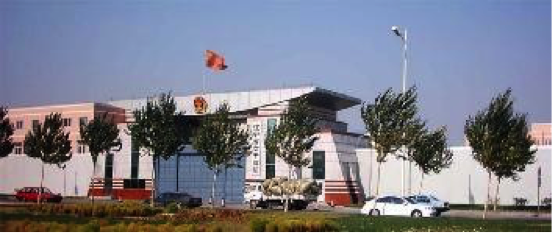
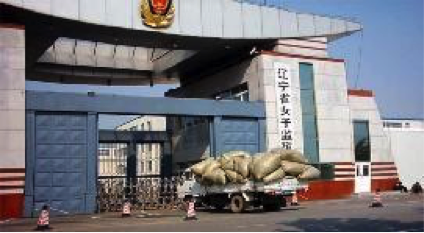
Figure 4.11: Delivering silk cotton (raw materials for down-jacket processing) to the ninth division, a truck is entering Liaoning Provincial Women’s Prison[194]
The photo below shows that a truck loaded with materials for slave labor production parked at the entrance of Liaoning Provincial Women’s Prison. There were printed characters on the cargo boxes which read “Jintianyu” Magnetic Vibration Series Healthcare Products, with the manufacturer name Shenyang’s Yisheng Health Appliances Development Co. Ltd. (Address: 79 Sanhao Street, Heping District, Shenyang, China; Tel: 024-22948660, 024-22947708; postal code: 110004)[195]
5) Shanghai Women’s Prison and related companies
Shanghai Women’s Prison has cooperated with Yihai Kerry Foodstuff Marketing Co., Ltd, Shanghai Jahwa Corporation, KFC and Feidiao Electrical Appliances (Group) Co., Ltd.
(1) Yihai Kerry Foodstuff Marketing Co. employs Shanghai Women’s Prison to knot labels for its “Arowana” brand products. Knotting labels for “Arowana” products is a long-term slave labor activity in Shanghai Women’s Prison. The fifth brigade of the prison has been illegally detaining several dozen Falun Gong practitioners. Their daily labor activities are mostly to knot labels for “Arowana” products, and they must finish 5,400 labels each day. Falun Gong practitioners are often forced to do this kind of labor activities for several consecutive months, leading to skin loss, bleeding, pus oozing and calluses on their fingers due to rubbing. To enhance productivity, the prison forces slave workers to eat, sleep, work and even urinate/defecate in their cells.[196]
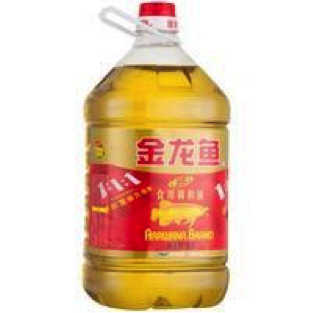
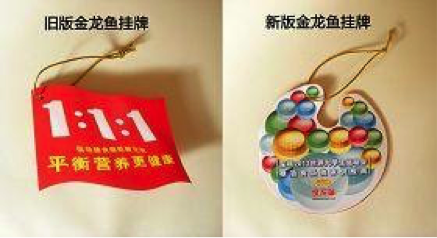
Figure 4.13: “Arowana” brand products and their labels:
Yihai Kerry Foodstuff Marketing Co., Ltd
Phone: 0755-66863888
Fax: 0755-61864615
Website: www.jinlongyu.cn
(2) Other known brands that are involved in slave labor in this prison include Gillette (paper boxes for razor blades), Shanghai Jahwa Corporation (paper packaging boxes for cosmetics), KFC (coupons), and Feidiao Electrical Appliances (switches). Slave products for unknown brands include hand-made clothing and hand-knit sweaters.

Figure 4.14: KFC coupons
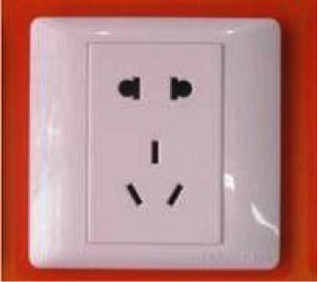
Figure 4.15: Feidiao brand switch
6) Heilongjiang Tailai Prison and South Korean brand Missha
Missha (Chinese name: Mishang) is a South Korean brand.
Production process:[197]
(1) Separating bundles of false eyelashes into small rolls.
(2) Making mesh-like eyelashes (Fig. 4.16.): Insert every single eyelash into the mould with tweezers, then merge two slices of eyelashes into one (Fig. 4.17). This work is very harmful to the eyes, likely to cause nearsightedness or farsightedness to worsen. The prisoners are forced to work for over 10 hours per day to produce 200-300 slides.

Figure 4.16: a mold for eyelash processing
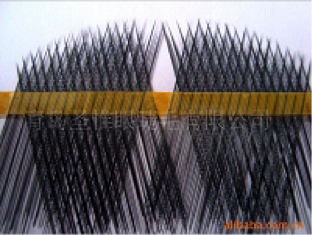
Figure 4.17: mesh-like false eyelashes created by combining two slices into one
Making Fan-like shape eyelashes (Fig. 4.18): Draw a picture (like an undulating mountain), then place eyelashes one by one onto the drawing until it is shaped and covered
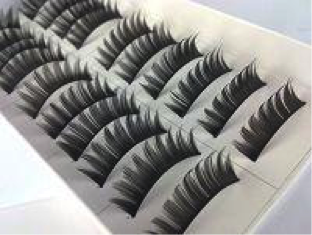
Figure 4.18: Fan-like shape false eyelashes
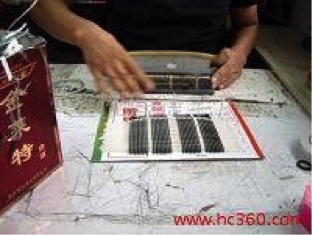
Figure 4.19 : semi-finished products
(All images are from the Internet)
(3) Style Finalization: Apply the pungent glue (carcinogenic) to the tape part of the semi-finished product, then attach two glue-dipped black lines to the upper and lower parts respectively, then put it into a modified large oven (originally a baker’s oven with multiple layers). The odor of the baking glue is very irritating to the nose, forcing out tears and suppressing appetite. In the winter, all windows and doors are shut, which makes it even harder to tolerate the smell.
(4) Cut the eyelashes from the tape part and attach to the product package as illustrated in Figure 4.20.
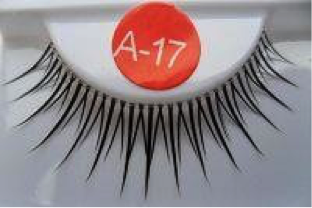
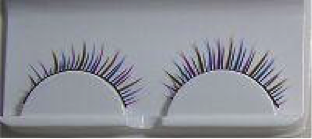
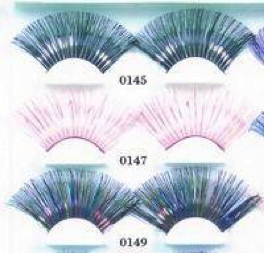
Figure 4.20. finished products (from the Internet)
7) Shanghai prisons, Shanghai forced labor camps and related companies
Shanghai prisons and forced labor camps have cooperated with GOFFA, TOPVALU, AEON Co., Ltd. and Shanghai Xinhua Toy Co. Ltd.
(1) Shanghai prisons and forced labor camps have produced many plush toys for exports. One of the companies that has imported these toys is a brand called GOFFA, which is registered in Brooklyn, New York City in the U.S. The company’s full name and address is “GOFFA INT’L CORP BROOKLYN, NY, 11206”. The toys have labels printed with “RECOMMENDED FOR CHILDREN”.[198]
(2) Shanghai prions and forced labor camps have also produced clothing for exports. One of the companies that has imported these products owns a pajama brand called “TOPVALU” (“トップバリュ” in Japanese). The products are labeled for the Japanese company “AEON” (TOPVALU is a brand affiliated to AEON) and service hotline is 0120-28-4196 (a Japanese phone number). There are many other brands importing these slave worker products continuously and in large quantities.[199]
(3) Shanghai Xinhua Toy Co. Ltd. used to contract around 120 inmates of Shanghai Women’s Labor Camp as employees. Among them, 70 were lathe operators and 40-50 were back-end workers.
Shanghai Xinhua Toy and Gift Co. Ltd.
Legal representative: Ye Hong (叶弘)
Company type: Chinese-Foreign Cooperative Venture
Major Business: toy manufacturing
Registered capital: 210,000 yuan (approximately $32,300)
Phone number (fax): 021-64500863
Postal code: 201109
Address: 189 Huxing Road, Qibao Town, Minhang District, Shanghai
8) Collaboration between Shanghai Tilanqiao Prison and Shanghai Soap Co., Ltd., Shanghai Jahwa Corporation.
Bee & Flower Sandalwood Soap is an well-known brand owned by Shanghai Soap Co., Ltd., whereas MAXAM is a brand of Shanghai Jahwa Corporation. Both brands have some products exported to countries such as Southeastern Asia. Part of the production process of cleaning products such as soaps of both brands, however, are done in mass quantities in prisons such as Shanghai Tilanqiao.[200] In addition, during China’s SARS outbreak in 2003, a large amount of medicated soaps (Fig. 4.21) were supplied to the market. Many inmates of Tilanqiao Prison had worked overtime to process those medicated soaps for Shanghai Soap Co., Ltd.[201]
One procedure of Bee & Flower Sandalwood Soaps production, which is carried out at Tilanqiao Prison, is to attach two belt-type product manuals and name labels (Fig. 4.21-1 and 1-2), and then attach two round trademark stickers (Fig. 4.21-1 and 3-4) onto a soap package.

Figure 4.21-1: Bee & Flower Sandalwood Soaps (several types of soaps frequently processed at Shanghai’s Tilanqiao Prison)
Production procedures:
(1) Bee & Flower Sandalwood Soaps: The slave laborers need to package over 70 boxes of big soaps (72 soaps per box) or more than 30 boxes of small soaps (144 soaps per box), approximately 5,500 soaps daily. Before attaching the manuals and tags onto the soap packages, the workers would need to prepare the materials: fold one-page manuals into a belt-shape, fold paper boxes to contain the finished products, and there were two kinds of paper boxes, which could contain 12 or 4 soaps respectively. Sometimes, workers would also need to attach product serial number stickers to soaps in full English packaging. Many inmates have to work during their breaks to finish their assigned quotas.
(2) MAXAM products: the inmates mostly work on packaging soaps (Fig. 4.21-2); they also used to work on packaging liquid hand soaps.[202]
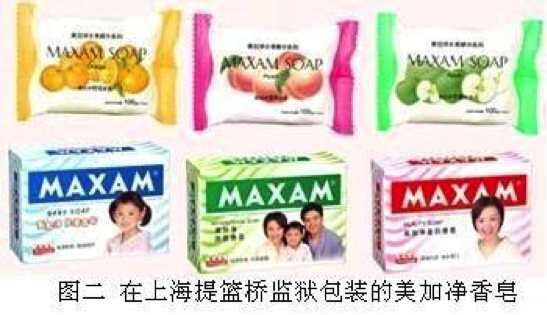
Figure 4.21-2: MAXAM soaps processed in Shanghai Tilanqiao Prison
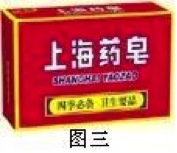
Figure 4.21-3.
2. Slave Labor Products Made in Forced Labor Camps and the Companies that Commissioned them
Prior to the official abolishment of China’s forced labor camp system in December 2013, forced labor camps were illegal factories that had produced a massive quantity of slave labor products.
1) Hebei Province Women’s Labor Camp and Related Companies:
Hebei Women's Labor Camp works with Hebei Yikang Cotton Textile Co. Ltd., Hebei Jinhuan Packaging Co., Ltd., Inner Mongolia Yili Industrial Group Co., Ltd., Inner Mongolia Mengniu Dairy Group Co., Ltd., and Shijiazhuang Electric Power Transmission and Distribution Labor Service Company.
(1) Hebei Yikang Cotton Textile Co. Ltd.
Exporting products for 30 years, Yikang Cotton Textile Co. Ltd is the parent company of Hebei Yisheng Environmental Protection Technology Co. Ltd. and Shijiazhuang Yifa Textile Co. Ltd, and has the registered trademark “YK”. Its main products include grey fabrics, dyed fabrics, different series of diapers, bedding, bath products, children’s clothing, cleaning products, sanitation materials and green materials. These products are exported to dozens of countries and regions, including Japan, Malaysia, Australia, the United States and Germany.[203]
Address: 177 Nanhuan East Road, Lingshou County, Hebei Province, China
Postal code: 050500
Client type: Agents and supermarkets
Chairman: Su Yiwei, male, 55, currently the general manager and party committee secretary of Hebei Yikang Cotton Textile Co. Ltd., 0311-82962619, 0311-82527107
Contact person: Ms. Xu Zhenzhen (deputy general manager)
Contact person: Zhao Yuan, Cell:15931090261, phone: 0311-66068260, fax: 0311-82511069
Contact person: Meng Jinpeng (salesperson), Phone: 0311-82516396, email: jaspercn@yahoo.cn
Contact person: Su Hui, phone: 0311-82527107, fax: 0311-82963968
E-mail: info@hbyk.com
In recent years, the second and third brigades of the Women's Labor Camp of Hebei Province had been mostly working for Hebei Yikang Cotton Textile Co. Ltd. to process the microfiber cleaning cloths of 38cm×40cm in size and pink, blue and yellow in color. Other products included diapers, eyeglass cleaning cloths, bamboo fiber kitchen cloths, french terry fabrics, car-cleaning cloths, glass-cleaning cloths, tea cloths, shower caps, polyurethane microfiber cloths and many others.[204]
Product photos:
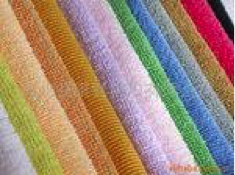
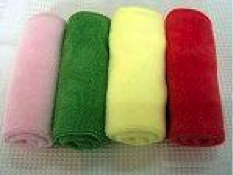
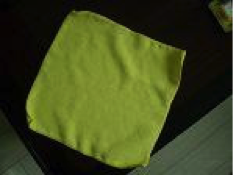
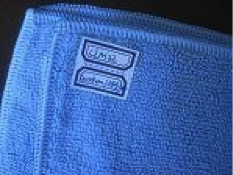
Figure 4.22: Microfiber cleaning cloths (the labor camp mainly produced cloths of pink, blue and yellow in color)
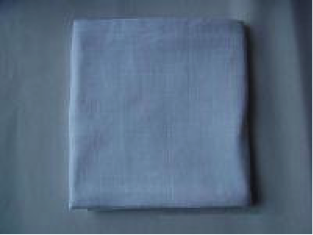
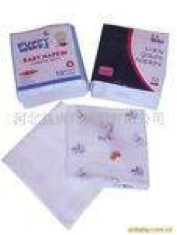
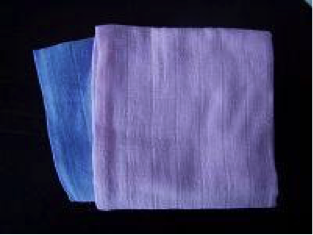
Figure 4.23. 100% cotton diapers (the ones shown here don’t have any pattern on them; there are some ones with patterns – baby bears for boys and little princesses for girls)
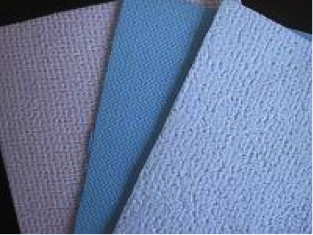
Figure 4.24.Polyurethane microfiber cloths
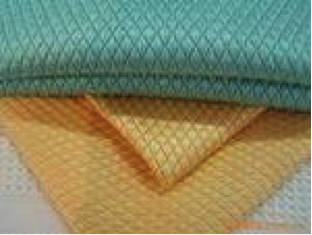
Figure 4.25. Microfiber french terry fabrics
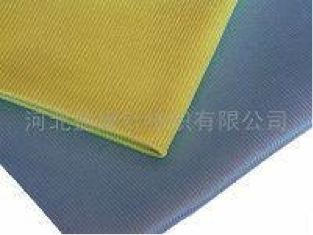
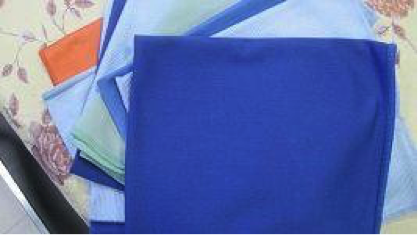
Figure 4.26. Glass-cleaning cloths (they mostly processed blue ones)
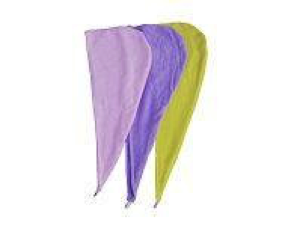
Figure 4.27. Shower caps
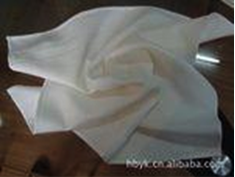
Figure 4.28. Microfiber tea towels (there are also blue and pink plaid ones in addition to the white ones illustrated here)
Production process:
Processing the three-color cleaning cloths involved the following steps: lock-stitching, burning and packaging. Lock-stitching is using electric sewing machines to lock stitch the hems of the cut fabrics delivered from the factory. This step strictly requires technical skill in needle spacing and positioning the trademarks. Burning was to burn out the extra thread ends. First, one would connect a bench-fixed iron wire with an electric transformer. After the wire becomes red hot, it is used to burn out the extra thread ends after lock-stitching the fabrics. This step required the worker to avoid over-burning and loosening threads. Both the fabrics and threads used for lock-stitching were chemical fibers, which emit irritating chemical gases upon burning. This would cause damage to people’s respiratory systems and eyes. Packaging involves placing the cleaning cloths into boxes after burning. A great amount of chemical fibers from the cleaning cloths would hang in the air, causing harm to the respiratory system. Other products, such as diapers and glass-cleaning cloths were delivered as finished products to the labor camp just for packaging. The assigned quota per person per day for lock-stitching is 840 pieces ( beginners is 500 pieces), for burning is 1680 pieces, and for packaging is 600 pieces.[205]
(2) Hebei Jinhuan Packaging Co. Ltd.
Hebei Jinhuan Packaging Co., Ltd. was founded in 1992, with a total investment of 150 million yuan (approximately $23M). The company produces lids of various specifications for glass antibiotic containers, glass infusion bottles, and oral solution bottles. Its products are widely used by Shanghai Roche, North China Pharmaceutical Co., Ltd., CSPC Pharmaceutical Group Limited (popularly known as Shijiazhuang Pharma Group), China Resources Sanjiu Medical & Pharmaceutical Co., Ltd., Harbin Pharmaceutical Group Corporation, Taiji Group Co., Ltd. and some other well-known pharmaceutical companies. Its products have also been exported in batches to Southeastern Asia, Northeastern Asia, the Middle East, Taiwan and other regions.[206]
Contact person: Liu Baojun (sales manager)
Website: http://www.flipoffcap.com
Postal code: 050026
Address: Fangxing Road, Fangcun Development Zone, Yuhua District, Shijiazhuang, Hebei Province, China
Phone: 0311-85493431, 0311-85494902, 0311-85494847
Fax: 0311-85491174, 0311-85494907
Email: jinhuan@flipoffcap.com
The fourth brigade of Hebei Province Women’s Labor Camp was mainly processing aluminum-plastic composite bottle caps for oral solution bottles for Hebei Jinhuan Packaging Co., Ltd. There were different sizes of aluminum plastic bottle caps, which are golden, silver and blue in color (see the photo below).
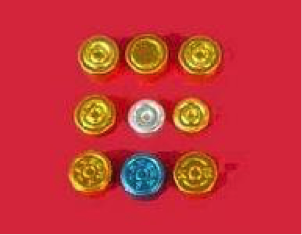
Figure 4.29. Bottle caps for Hebei Jinhuan Packaging Co., Ltd.
Production Process:
Processing oral solution bottle lids involved roughly three steps. First, the unqualified aluminum caps would be screened out, then rubber stoppers had to be inserted into the qualified aluminum bottle caps, and finally, on a large plastic disc, they would pass through the quality control and defective products were picked out. These steps were supposed to be done by specialized machinery in a strictly disinfected workshop. However, all of them were manually done by the fourth brigade of Hebei Province Women’s Labor Camp. Lid installation required clasping the rubber stoppers with a mold and then inserting them into the aluminum lids. The standard output required for each person in the fourth brigade was 10,000 gold aluminum caps per day. There were even patients of infectious
diseases among the workers. The work tables were only wiped with wet rags before the work started. In order to speed things up, some people would use their fingers and nails to insert the rubber stoppers into qualified aluminum bottle caps instead of using their molds. Such packaging process was impossible to meet the sanitation requirements.[207]
(3) Inner Mongolia Yili Industrial Group Co., Ltd. and Mengniu Dairy (Group) Company Limited
Between 2008 and 2009, Hebei Province Women’s Forced Labor Camp detainees undertook the work of putting handles on boxes for milk products for Yili (Inner Mongolia Yili Industrial Group Co., Ltd.) and Mengniu [Inner Mongolia Mengniu Dairy (Group) Company Limited]. They also made boxes for moon cakes, packaged toothpicks and chopsticks.[208]
(4) Hebei Electric Power Transmission and Distribution Labor Service Company in Shijiazhuang
The second brigade detainees in Hebei Province Women’s Forced Labor Camp folded shower curtains for the Foreign Trade Division of Hebei Electric Power Transmission and Distribution Labor Service Company (these shower curtains were exported to many countries), folded paper bags for cotton seeds, and in 2012, were delegated to pick vegetables supplied by a vegetable company for a supermarket.
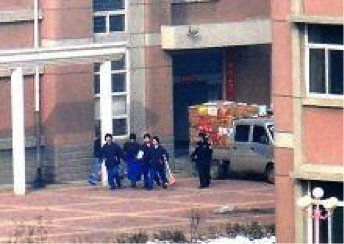
Figure. 30. Inside Hebei Province Women’s Forced Labor Camp (partially enlarged picture), a loading truck was packed with boxes at the building entrance
2) Shanghai Qingsong Women’s Forced Labor Camp’s Third Brigade and Related Companies
Shanghai Qingsong Women’s Forced Labor Camp’s third brigade worked with the Italian brand “My Doll”, Shanghai Three Gun (Group) Co., Ltd, Shanghai Daphne Footwear Co., Ltd., Shanghai Haixin Group Co., Ltd. (its three subsidiaries: Haiyan Toys Co., Ltd., Haixing Toys Co., Ltd. and Haili Toys Co., Ltd. also have business relationships with labor camps), Shanghai Global Toys Co. Ltd., Shanghai Yousheng Toys Co., Ltd., Shanghai Shenxin Toys Co., Ltd., Shanghai Changfu Toys Co., Ltd., Haojiang First Electronics Company, Shanghai Chacha Food Co., Ltd., and Red Triangle Plush Toy Factory in Xujing Town, Shanghai.
Falun Dafa practitioner Li Ying graduated from Shanghai Tongji University in 1992, with a major in business administration. She used to work for a consulting company in Shanghai. In October 2001, she was illegally sentenced to two years for perseverance in practicing Falun Dafa and was detained
at Shanghai Qingsong Women’s Forced Labor Camp.
Li Ying’s testimony:
“From June 2002 to April and May of 2003, the third brigade had been processing dolls. Some of the dolls were packaged and directly exported to Italy, and some were semi-finished products. The dolls were delivered directly to the labor camp in hemp bags in three sizes. The large dolls (Figure 1) came in 100-piece sacks, and the smallest dolls were in 500- piece sacks. These dolls were stacked on the ground in the labor camp and some grew moldy in the hot weather. However, since the dolls had clothes on, no one could see how dirty their insides were. Those packaged and exported products all had production deadlines. The inmates and illegally detained Falun Gong practitioners had to start work every day before 7:00 a.m. Under regular circumstances, the detainees would finish working at 9:00 p.m., but most of them were usually made to work until 11 p.m. The labor camp’s quotas were calculated based on the workload of 10 hours, but most people wouldn’t be able to meet the quotas.”

Figure 4.31. In the picture, the hats and pants of the dolls in both girls’ hands are all slave labor products made in Shanghai Qingsong Women’s Forced Labor Camp. The doll in the girl’s hand on the right was packaged by the first squadron of the third brigade. In order to complete this product’s order by the deadline, the detained Falun Gong practitioners were forced to work until the early morning of the next day. The flowers on the right trousers of the girl on the left were needle embroidered. The production requirements were that no stitch or burr could be seen, the flowers couldn’t be crooked or have any edges or corners.The labor camp was only responsible for the flower embroidery to make semi-finished products. The hats of both girls, including the flowers on the hats, and the little houses with chimneys on the blanket were also made by the labor camp detainees. They were semi-finished products and composed of seven pieces of cloth. Each piece of cloth had to be embroidered in a certain order on the base cloth. The workload was 120 products per person per day.
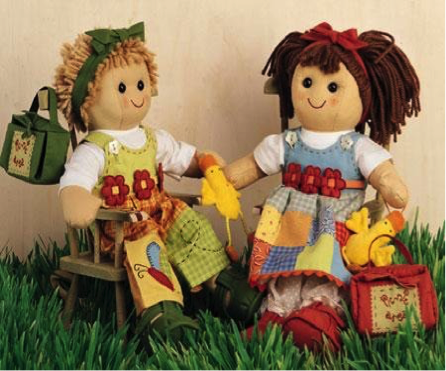
Figure 4.32. The overalls worn by the doll on the left, and the appliqués on the right trousers are all hand-made. The collar of the dress worn by the doll on the right was also embroidered with evenly distributed stitches.

Figure 4.33.

Figure 4.34. Both sides of the strawberry bag in front of the girl are embroidered to make the diamond-shaped blocks with a concave-convex feeling. This required evenly distributed stitches in straight lines.

Figure 4.35. The trousers worn by the teddy bear sitting in the chair: the applique on the right trousers is semi-finished products that the labor camp is responsible for embroidering.

Figure. 4.36.
The sun flower on the skirt worn by the first doll in the rear left was stitched onto the skirt. And the blue bib’s collar and hem were also embroidered with evenly distributed stitches, which were placed no more than 0.5 cm apart. No thread ends or knots should be seen. The head flowers were also produced at the labor camp.
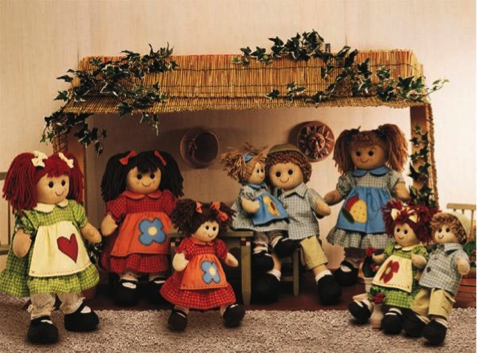
Figure 4.37.
The appliqués on all the dolls’ skirts were embroidered by the labor camp. The skirts’ collars and the bibs’ hems were also embroidered with evenly distributed stitches.
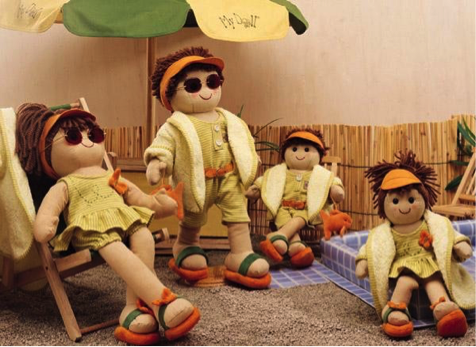
Figure. 4.38: The butterflies and their flying paths on these dolls’ clothes were embroidered by the labor camp.
The above pictures were downloaded from www.mydoll.it. The pictures on this website are just some of the products produced by Li Ying at the forced labor camp. Also, there are matching clothes and bags, which are individually packaged.[209] In addition, “each brigade of the Shanghai Women’s Forced Labor Camp has its own channels (to solicit orders). Therefore, there was a wide range of slave labor products, such as processed plush toys, processed shirts, processed shoes and electronics. Many companies near the Shanghai Women’s Forced Labor Camp have business ties with labor camps and prisons. However, there have also been many business groups and enterprises outsourcing their production and processing work to labor camps. These companies included Shanghai Three Gun (Group) Co., Ltd, women’s shoes retailer Daphne in Shanghai, Shanghai Haixin Group Co., Ltd. (and its three subsidiaries: Haiyan Toys Co., Ltd. of Shanghai, Haixing Toys Co., Ltd. and Haili Toys Co., Ltd.); Shanghai Global Toys Co. Ltd., Shanghai Yousheng Toys Co., Ltd., Shanghai Shenxin Toys Co., Ltd., Shanghai Changfu Toys Co., Ltd., Haojiang First Electronics Company, Qiaqia Food Co., Ltd. in Shanghai.”[210] The women’s labor camp’s second brigade was mainly processing plush toys (see the images below). Some of the detainees were “hired” by certain manufacturers. For example, Red Triangle Plush Toy Factory in Xujing Town, Shanghai, hired 50 detainees as its own company employees.”[211]



Figure 4.39-4.41. Products manufactured by Shanghai Changfu Toys Co., Ltd.
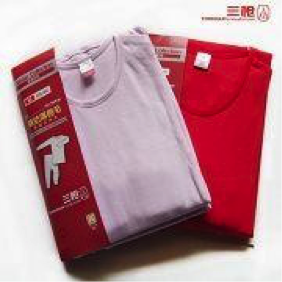

Figure 4.42 Slave Labor Products Made in Shanghai Women’s Forced Labor Camp
3) Chongqing Women’s Forced Labor Camp worked with Chongqing Chang’an Automobile and Yaxuan Group Co., Ltd.
Chongqing Women’s Forced Labor Camp sent the younger detainees to a rubber workshop to produce accessories for the Chongqing Chang’an Automobile. After this workshop failed in December 2008, it was changed to making fittings for electrical wire installation.[212] The older detainees were sent to a candy workshop to wrap candies. If one missed the quota by nine hours in one week, as punishment, every night she would be forced to sit upright for two hours if she was over 60 years old or to stand for two hours if she’s younger than 60.[213]
The candy barrels and the boards used for the candy wrapping in the fourth brigade were filthy and covered with mildew. Mouse excrements were often seen mixed in with the candies. When authorities came to inspect, the camp guards would order the detainees to hide all the candies. Any detainee who mentioned ‘candy wrapping’ to outsiders would get her term extended as punishment.[214]
The following are the product names and manufacturer of candies wrapped in the labor camp.[215]
Manufacturer: Yaxuan Group Co., Ltd.
Address: Industrial park, Yuzui Township, Jiangbei, Chongqing
Phone: 023-67580555
Fax: 023-67580788
Products of forced labor:
Rope candies - Happy family (see photo)
Boy & girl candies – Let’s get married
Fan candies - The predestined relationship of this life (see photo)
Long lollipops - Romantic journey
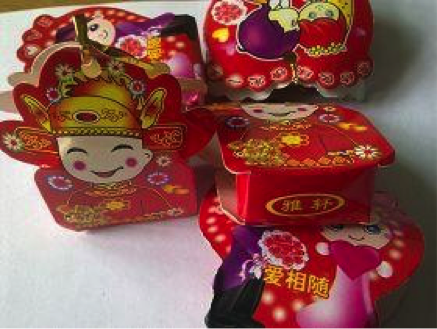
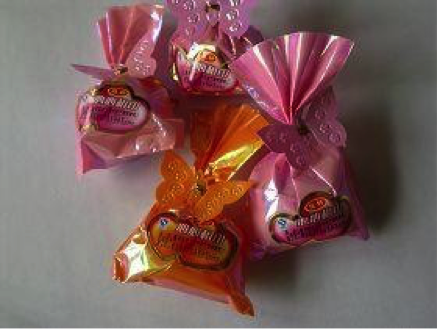
Figure 4.43 Rope candies Figure 4.44 Fan candies
4) Shaanxi Province Zaozihe Forced Labor Camp and Xifeng Brewery
Xifeng wine is the leading product of Shaanxi Province’s Xifeng Brewery. Located in Fengxiang County of Shaanxi Province, the Zaozihe Forced Labor Camp started manufacturing hand bags and packing bags for Xifeng Brewery in 2002.[216]
Shaanxi Xifeng Wine Marketing Co., Ltd
Address: Liulin Town, Fengxiang County, Shaanxi Province
Zip code: 721406
Tel: 0917-7421000; 0917-8612833 (sales phone)
Fax: 0917-8610999; 0917-7421100
E-mail: xfyx168@163.com
5) Shanghai Forced Labor Camp and related companies
Shanghai Forced Labor Camp cooperated and worked with Shanghai Haili Toys Co., Ltd., Shanghai Xujing Red Triangle Plush Toys Factory, Shanghai Haifa Toys Co., Ltd., Shanghai Changfu Toys Co., Ltd., Shanghai Toys No. 7 Factory, Shanghai Global Toys Co., Ltd. and Shanghai Haiyan Toys Co., Ltd.
Shanghai Haili Toys Co., Ltd. is one of the subsidiaries of Shanghai Haixin Group Co., Ltd. and specializing in the production and sales of various plush toys, some of which are exported to Europe and the United States. However, some of these products were produced in Shanghai’s forced labor camps.
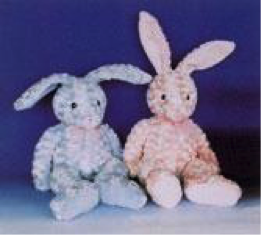
Figure 4.45. One type of product of Haili Toys Co., Ltd.
Production process: The noses of the stuffed rabbits in the above photo were required to be embroidered with two threads at any given time. However, the “fast workers” would use four or six threads to sew the nose in order to cut corners to complete their production quotas as soon as possible. They made several stitches and one nose was done. To sew the bows on the stuffed rabbits, it required sewing them back and forth several times. However, the “fast workers” made just one stitch to finish the job. For the rabbits’ eyes, it required sewing from the end of the neck up to one eye and then up to the head, then coming down to the other eye toward the end of the neck. Those “fast workers” just sewed from one eye directly to the other eye, without going through the proper steps.[217]

Figure 4.46 New building for labor camp
This is a building completed in 2004. The first floor is “Qingyuan Supermarket”, the second floor is the electronic products assembly line for the second brigade, the third floor is the electronic products assembly line for the fourth brigade and the fourth floor is a multi-purpose conference hall.
In addition to Shanghai Haili Toys Co., Ltd., the other companies in Shanghai, which have manufactured products in the labor camp include Shanghai Xujing Red Triangle Plush Toys Factory, Shanghai Haifa Toys Co., Ltd., Shanghai Changfu Toys Co., Ltd., Shanghai Toys No. 7 Factory, Shanghai Global Toys Co., Ltd. and Shanghai Haiyan Toys Co., Ltd.[218] In recent years, Shanghai has constantly seen many toy companies being established. A large number of toy manufacturers signed production contracts with labor camps to make profits.
6) Xinkaipu Forced Labor Camp in Changsha City of Hunan Province and related companies
Xinkaipu Labor Camp of Changsha City, Hunan Province had used forced labor to produce food wrappers and packages, including those used for ready-to-eat foods. The camp’s workplaces were full of dust and trash. The conditions were unsanitary and not suitable for any kind of food-related production. Some criminal inmates (non-practitioners) even intentionally put sputum, nasal mucus and feces on the products to vent their grievances.[219]
Products made here by forced labor: wrappers for Tasty Duck Necks sold in Hunan, Chongqing and Zhengzhou; inner wrappers for Hunan Special Crunchy Candies (sent to Loudi); chopsticks for the Southern Pearl International Hotel in Changsha (sent to Changsha Weichu Great Kitchen, Kaiyan Foods, Daronghe and Jishou Xiangxi Ethnic Hotel); toothpicks for Pingxiang of Jiangxi Province; containers for Hunan yogurt (in Anxiang County); packaging bags for Yangtianxing Brand chestnuts, Pencheng Brand milk powder and Nanzai Brand milk powder; gift bags for Jiuzhitang Co., Ltd.’s Zhi Brand donkey-hide gelatin blood-replenishing oral solution; packaging for Renbaoce Brand thermometers; Laiyang throat tablets and other products.[220]
7) Shandong First Women’s Labor Camp and Beijing’s Shuanghe Pharmaceutical Co., Ltd.
Shandong Province First Women’s Labor Camp was also popularly known as Jinan City’s Jiangshuiquan Forced Labor Camp. From year 2002 to 2003, one of the tasks in the labor camp was to stick labels onto medicine packages. The labels were printed by Jinan City’s Tianyi Printing Company. (Formerly known as Donggang Company, which produces high-quality carbonless copy paper.) These labels must be affixed on both inside and outside of the packages of “Beijing’s Pressure Lowering No. 0” medicine produced by Beijing’s Shuanghe Pharmaceutical Co., Ltd.
Falun Gong practitioners, who were illegally detained in the first, second, and third brigades, were forced to stick “Shuanghe” labels on the packages of “Beijing’s Pressure Lowering No. 0” products. The labels came in different shapes such as rectangle, oval, etc. The medicine packages of “Beijing’s Pressure Lowering No. 0” were folded and packed tightly in cartons and delivered to the labor camp. The cartons came in two sizes. One large carton contained 2,000 medicine boxes which were placed in two layers. The smaller carton could hold approximately 1,000 medicine boxes. Each of the practitioners had to complete at least 6,000-8,000 labels per day, and some were even made to do more than 20,000.[221]
8) Masanjia Men’s Labor Camp and “Weishi (Wirge)” Down Jackets and “Bosideng” Down Coats
In Masanjia Men’s Labor Camp, one of the forced labor jobs was sewing kids’ down coats and pants. They made down coats for many brands including “Weishi (Wirge)” and “Bosideng”.[222]
9) Masanjia Women’s Labor Camp
Masanjia Women’s Labor Camp was affiliated to the Masanjia Re-education through Labor Institute. It was located in Masanjia Village, Masanjia Street, Yuhong District, Shenyang City of Liaoning Province , and was a facility to “re-educate” women through labor. It not only detained and tortured Falun Gong practitioners and others, but was also an illegal factory making slave labor products.
According to a report published on December 27, 2012 on the Daily Beast, an online magazine under Newsweek, Julie Keith of Portland, Oregon, USA found an SOS letter from a Chinese labor camp in the Halloween kit she purchased. The letter was folded eight times and tucked between two foam tombstones. The letter read, “Sir, if you occasionally buy this product, please kindly resend this letter to the World Human Right Organization. Thousands people here who are under the persecution of the Chinese Communist Party Government will thank and remember you forever.” “People who work here have to work 15 hours a day without Saturday, Sunday break and any holidays. Otherwise, they will suffer torture, beat and rude remark, nearly no payment (10 yuan/month).” “People who work here suffer punishment 1-3 years averagely, but without Court Sentence. Many of them are Falun Gong practitioners who are totally innocent people only because they have different believe to CCP. They often suffer more punishment than others.” In this unsigned letter, it was written that this product was produced by Unit 8, Department 2, Masanjia Labor Camp, Shenyang, Liaoning Province.[223]
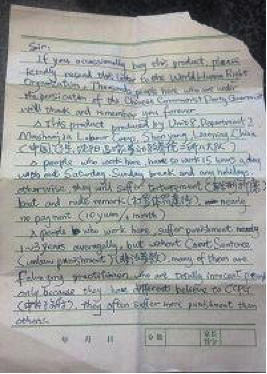
Figure 4.47. Screenshot of handwritten SOS letter
The pictures below are some exported products made by Falun Gong practitioners under duress in Masanjia Forced Labor Camp in Shenyang City of Liaoning Province.[224]
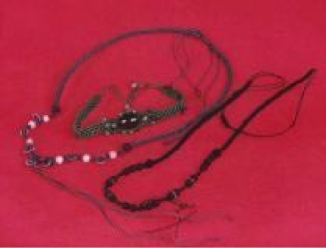
Figure 4.48 Necklaces and bracelets
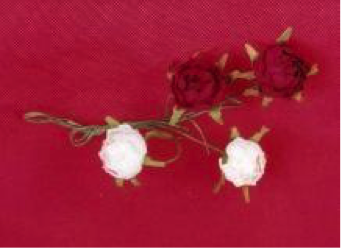
Figure 4.49 Crafts
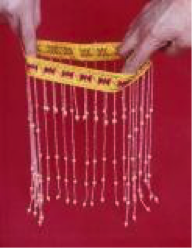
Figure 4.50 Children’s jewelry
10) Former Hebei Women’s Forced Labor Camp Processed Arowana Brand Rice Packages
At the end of 2012, the former Hebei Women’s Forced Labor Camp made rice packages for the Arowana Brand. (The factory was located in the Luquan and Zhengding area.) Each detainee was assigned a certain output quota by the forced labor camp, and the output quota was incrementally increased. Those who could not meet their quotas were forced to work overtime. As a strictly supervised division, the fourth brigade produced most of the forced labor products here, including the Arowana Brand products.[225]
11) Baoding Balizhuang Labor Camp works with Baoding Jiuwang Plastic Packing Co., Ltd.
The detainees at Baoding Balizhuang Labor Camp were forced to assemble luggage combination locks (see picture below) and insert strings around the openings of the fruit and vegetable mesh bags for Jiuwang Plastic Packing Co., Ltd (see pictures below).

Figure 4.51. luggage combination lock
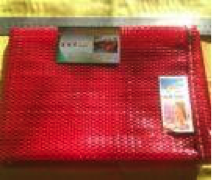
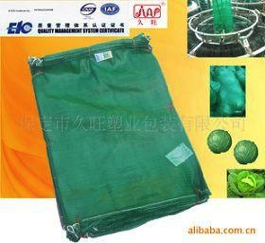
Figure 4.52. fruit and vegetable mesh bags for Jiuwang Baoding Jiuwang Plastic Packing Co., Ltd
Address:
North Industrial Zone, Zhuzhuang Village, Second Ring Road South, Baoding, Hebei, China[226]
Lian Yuncai: 13933250850
Lian Yunkai: 13930833433
Phone: 0312-2150388
Fax: 0312-2152883
Postal Code: 071000
12) Xinjiang Wulabo Labor Camp, Xinjiang Women’s Labor Camp, Xinjiang Changji Labor Camp, Xinjiang No.3 Prison, Xinjiang No.5 Prison work with Xinjiang Tianshan Wool Tex Stock Co., Ltd.
(1) Xinjiang Tianshan Wool Tex Stock Co., Ltd.
Xinjiang Tianshan Wool Tex Stock Co., Ltd. (hereinafter referred to as “Tianshan Wool Tex”) was previously Xinjiang Tianshan Wool Textile Co., Ltd., which was a joint venture with capital from Urumqi Tianshan Wool Textile Co., Hong Kong Tianshan Wool Textile Co., Ltd. (which consists of Hong Kong Peninsula Knitting Co., Ltd., and Dongyang (Japan) Toyo Spinning Industry Co., Ltd.), Hong Kong International Cotton Industry Co., Ltd. and the Xinjiang Uygur Autonomous Region Supply and Marketing Cooperative.[227] Since 1990, in order to lower costs and compete in the international market, the company set up Xinjiang Tianshan Woolen sweater workshops in Xinjiang Wulabo Labor Camp, Xinjiang Women’s Labor Camp, Xinjiang Changji Labor Camp, Xinjiang No. 3 Prison and Xinjiang No. 5 Prison.[228]
In August 2000, male Falun Gong practitioners being illegally held at different labor camps in Xinjiang were sent to the sixth brigade of the Changji Labor Camp, which became the designated location for the persecuted Falun Gong practitioners. It was also the main site where products for Tianshan Wool Tex were processed. From 2000 to 2002, more than 50 Falun Gong practitioners were forced to work for Tianshan Wool Tex in labor camp workshops.[229]
After receiving orders, Tianshan Wool Tex transferred them to the labor camp or prison along with the supplied materials, and bought back the finished products at an extremely low price within a limited time. In order to meet the deadlines and earn exorbitant profits, prison guards often forced the detainees to work overtime without sleep for several days straight. Many detainees at Xinjiang Changji Labor Camp’s first brigade were routinely deprived of sleeping in their beds for 10 to 15 days. Working an average of more than 20 hours per day, they could only take a short nap after dawn on the platforms where they made the sweaters. When operating the machines, they had to stand for an entire day and night, often making their legs swollen. The workshop was located only 200 meters from the canteen, but the detainees often did not have time to dine there, instead they often took a bucket of porridge back to the workshop and continued working after a quick meal.[230]
When weaving the sweater, if workers fell asleep, the guards would shock them with electric batons and order the head of the workshop (who was also an inmate) to beat them hard with bricks or sticks. If one detainee failed to complete his assigned work, the guard would cuff him to a heating pipe, strip him naked and shock his neck, armpits, lower abdomen, private areas, mouth and ears violently with electric batons, in addition to extending his detention term. They were especially malicious in torturing Falun Gong practitioners. The prison guards (i.e. policemen) from the sixth brigade forced Falun Gong practitioners who were determined to keep their faith, to do heavy labor, to dig vegetable cellars during the day and knit sweaters all night long. Exhausted Falun Gong practitioners often fell asleep at night while knitting the sweaters, and the guards would then poke them with long needles and scissors. The left hand of Falun Gong practitioner Wang Jianping from Karamay was handicapped, and he was slow in knitting sweaters, so the guards often threw bricks onto his chest and back. Sometimes when the practitioners made a mistake, the inspector would take the opportunity to beat, verbally abuse and extort money from them. Tianshan Wool Tex often forced detainees with no source of income to pay for damaged sweaters, and detainees who couldn’t pay received extended terms.[231]
Since the detainees were unable to take a shower for very long periods of time, lice from their bodies, along with pus and blood from acne were often rubbed off onto the sweaters. And since the inmates loathed the collusion between the Tianmao factory and the labor camp and being treated as slaves, they intentionally wiped the filthiest things on the sweaters as a form of revenge. However, as the sweaters would be ironed and reshaped before they were sold or exported, the dirty things and blood usually became invisible after the final step.[232]
However, the “Tianshan” trademark was identified as a “famous Chinese brand” by the State Administration for Industry and Commerce of China, certified by the Xinjiang Uygur Autonomous Region Administration for Industry and Commerce as a local famous brand, and awarded by mainland China’s General Bureau of Quality Supervision, Inspection and Quarantine as one of “China’s brand-name products in 2003” and a “quality inspection-free enterprise in 2002-2005”. They even deceived international certification bodies and obtained the IQNet international certification. Moreover, Tianshan Wool Tex has produced a large number of sweaters and cashmere sweaters for over a dozen well-known international brands other than TSE of Tianshan’s Hong Kong Subsidiary, such as :BANANA REPUBLIC, NEIMAN MARCUS, HOLT RENFREW, PORTS, MINIMUM, BON GENIE, TUTTI COLORI, ESPINA, CREAM, ANIVEE F., SON JUNG WAN, FRENCH CONNECTION, etc. Orders from BANANA REPUBLIC brand alone would number between 200,000 and 280,000 per year.[233]
XINJIANG TIANSHAN WOOL TEX STOCK CO, LTD.
ADDRESS: 1 YINCHUAN ROAD, URUMQI, XINJIANG, CHINA
POST CODE: 830054
TEL: 0086-0991-4311866-6834
FAX: 0086-0991-4310472
E-MAIL: business@chinatianshan.com
Website: http: //www.chinatianshan.com
E-mail: tsjszx@chinatianshan.com
Company legal representative: Zhang Ziqiang
XINJIANG TIANSHAN WOOL TEX HONGKONG OFFICE LTD。
ADDRESS: BLOCK B&C,9/F,702 CASTLE PEAK ROAD,HOP HINGIND.BLDG,KOWLOON,HONGKONG
TEL:852-27418591
FAX:852-27860197
(2) Xinjiang Changji Labor Camp
In Xinjiang Changji Labor Camp, the policemen and regular prisoners often forced Falun Gong practitioners to be brainwashed. If the practioners refused, they were dragged out for beatings and electric baton shocks. But the next day they were forced to continue working, and when they couldn’t complete the work, they were tortured again. Every day they worked over 16 hours. Beside Falun Gong practitioners, criminal offenders were also forced to do slave labor work. Due to prolonged overwork, sleep deprivation, malnutrition, stress and no medical care, many detainees contracted tuberculosis, hepatitis, acne, asthma and other infectious diseases, but they were still forced to work.
3. Slave Labor Products Made in Detention Centers and the Commissioned Companies
1) Shanghai Baoshan District Detention Center and Zhejiang Red Dragonfly Footwear Co. Ltd., Jiuguang Department Store
The Baoshan Detention Center in Shanghai, known as the “No. 1 Detention Center in the Far-east,” is an institution where heavy forced labor is imposed daily. Its products include boxes for contact lenses, packages for brand-name mooncakes, theme park brochures exported to Japan, shoe boxes for Zhejiang Red Dragonfly Footwear Co. Ltd. (see the picture below) and holiday shopping bags for the Jiuguang Department Store. All of these products have been made by detainees in cramped, locked cells.[234]
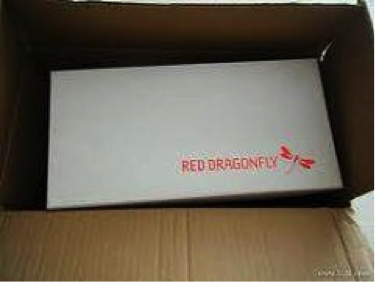
Figure 4.53. Red Dragonfly shoe box
2) Qian’an Detention Center, Hebei Province and Changli County Hat Factory, Qinhuangdao City
The Changli County Hat Factory of Qinhuangdao City processes 6 or 7 different kinds of products in Qian’an Detention Center of Hebei Province. The hat factory sends semi-finished product materials to the detention center, and the detainees there have to sit on their beds or on the ground in their cells to make the hats.[235]
Production Process: Using big needles made from discarded ball pen refills, the detainees would weave zig zag patterns on the outer rings of the hats with plastic flat threads. Certain patterns are also required to be made on the inner rings of the hats. Then they would stitch the outer ring, the inner ring and the cap top together and insert the strings.[236]
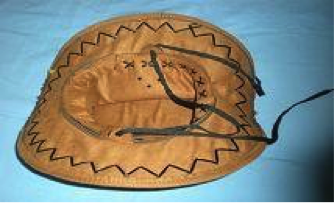
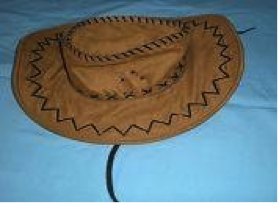
Figure 4.54. Product photos
In addition, in the fall, the detainees in the detention center have to extract pits from hawthorn fruits for two food canning factories from Lanruoyuan in Qian’an City.
Production process: Using a stainless-steel tube, the detainees drill into the hawthorn’s head with its thick end, then aim at the hawthorn’s bottom with its thin end to poke the pit out. Everyone has to extract pits from 20 to 25 kilograms of hawthorn fruits every day. Since the stainless-steel tube is very sharp and the hawthorn pit is very hard, it’s very easy to injure their hands, but the detainees have to keep working with their injuries.[237]
4. Slave Labor products without identified brands or companies
1) Sichuan Province Women’s Prison
A Falun Gong practitioner who had been illegally incarcerated in Sichuan Province Women’s Prison provided the following drawings, which are the patterns of the products she made in prison. She had performed many different tasks in the prison, including making wigs and braids (for mannequins), shoe uppers, mooncake boxes and envelopes. The prison would take any jobs that are profitable. The elderly and weak would knit sweaters, make embroidery on insoles and make firecrackers.[238] Other products of slavery include beaded purses for young girls, beaded handbags and cross-shoulder bags for ladies, beaded patterns such as butterflies, beetles, puppies, apples, bananas and cartoon figures. According to production instructors and quality control inspectors from the company that assigned the work to the prison, all these products are for export.[239]
These are the patterns of the slavery products: Figure 4.55.
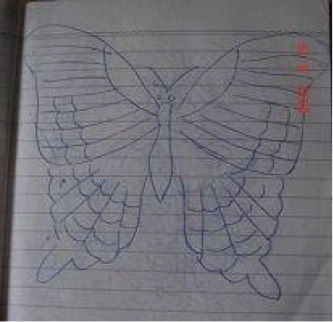
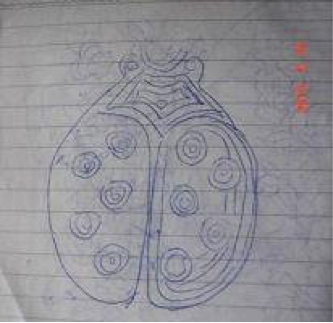
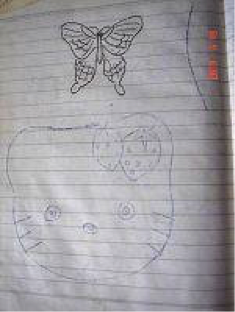

Figure 4.55. patterns of the slavery products
This female practitioner said, “Sichuan Embroidery can be classified into single-sided and double-sided embroidery. Usually one string is divided into several threads when sewing. These patterns are the embroideries on handkerchiefs that would be sold at the “Sanxingdui” tourist site. There are many varieties of patterns and large pieces of embroidery as well, for example when I was enduring persecution in the prison, I had applied Manchurian style embroidery to the collars and sleeve cuffs on Korean style women’s ceremonial dresses that would be exported to South Korea.”[240]
Sichuan Embroidery patterns on the handkerchiefs sold at Sanxingdui tourist site: Figure 4.56.
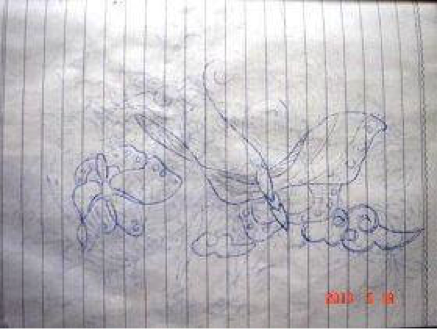
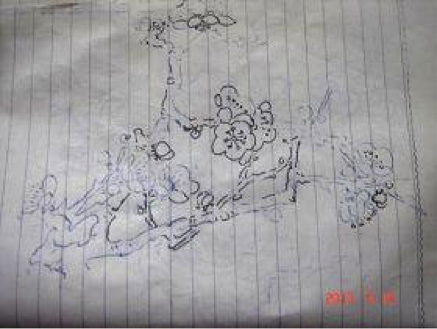
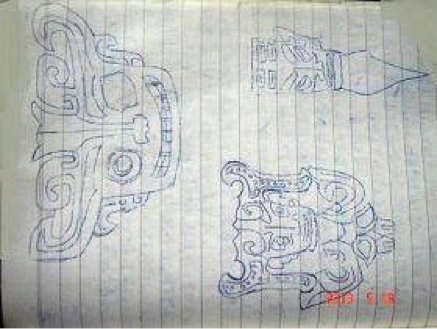
Figure 4.56.Sichuan Embroidery patterns on the handkerchiefs sold at Sanxingdui tourist sit.
The following are Cantonese-style embroidery patterns sewn on quilt covers.[241]
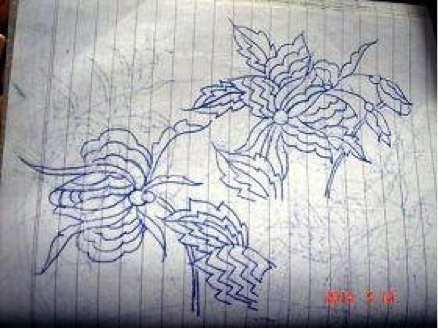
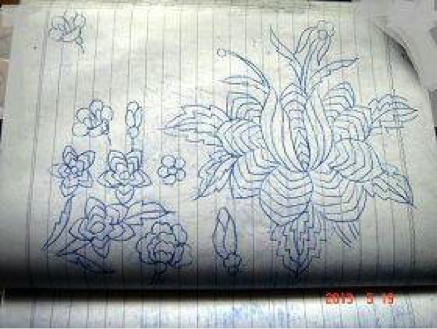
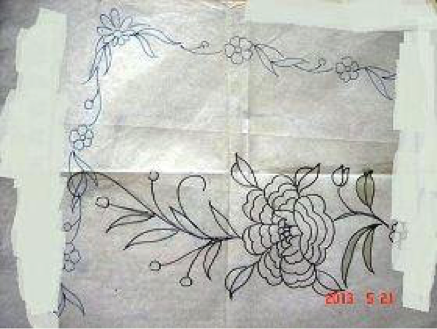
Figure 4.57.Cantonese-style embroidery patterns sewn on quilt covers
For more embroidery patterns, please download them from the link below (3.7MB)
http://pkg2.minghui.org/mh/2013/8/26/yue-xiu.zip
2) Yunnan Province Second Women’s Prison
All the sections in Yunnan Province Second Women’s Prison engaged in slave labor production except the ninth section. Among them, the first, second, third, fifth, sixth and seventh sections engaged in making adult apparel, mostly uniforms, as well as some fashionable clothes. The fourth and eighth sections (the eighth section held elderly and handicapped detainees) engage in the production of handicrafts, such as wallets, crafts, embroidery, beadings and bracelets. These are mostly Yunnan ethnic style fashion accessories and purses. The patterns look like the pictures below:[242]
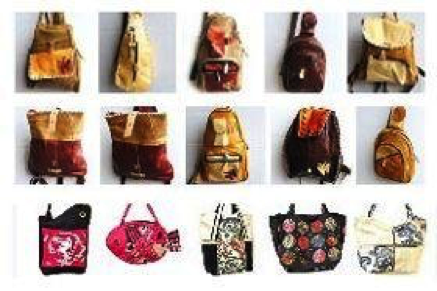
Figure 4.51 Leather Purses and Fabric Purses

Figure 4.58-2 Wallets and Bracelets
3) Kunming City Forced Labor Camp
Kunming City Drug Rehabilitation and Reeducation through Labor Institute was located at Wangdaqiao area of Kunming. In March 2009, it was renamed Kunming City Reeducation through Labor Institute and the sign “Kunming Compulsory Isolation and Drug Rehabilitation Center” was also added. At the end of 2009, the labor camp was transferred to the new center at Chenggong.
The labor camp had several business partners, all of which were local private enterprises and sole proprietorships. The slave labor products from this labor camp were sold at local tourist sites, and some were sold in other provinces and even exported to foreign countries.[243]
Categories of slavery products:[244]
(1) Chinese handicrafts, such as Chinese dolls of different ethnic groups,were sold at all major tourist sites in China

Figure 4.59 Chinese ethnic dolls
(2) Decorative buttons and fabric arts on bags
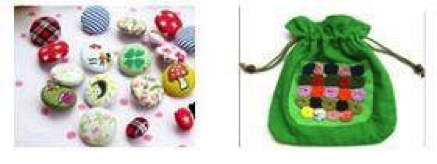
Figure 4.60 decorations on the bags
(3) Various kinds of purses, fabric bags and handbags (exported to Japan)
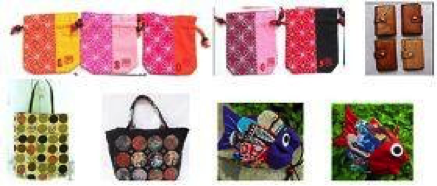
Figure 4.61 purses, bags
(4) Embroidery (5) Wigs


Figure 4.62 Embroidery Figure 4.63 Wigs
4) Hewan Forced Labor Camp in Wuhan City
On the gate of the sixth brigade of Hewan Forced Labor Camp, there was a large sign with the name of an apparel factory on it. In addition, this brigade had several licenses for other types of business.[245]

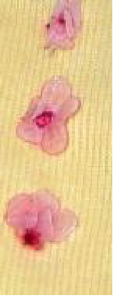
Figure 4.64 products made by Hewan Forced Labor Camp
The sweater on this toy dog is a product from the eighth brigade of Hewan Forced Labor Camp. Some detainees were required to knit 8 to 10 sweaters every day. The fabric flowers on the right are also made by the eighth brigade. Everyone was required to make several dozen pieces per day, a few cents (RMB) for each piece. The detainees also processed some small flowers on wedding gowns. They had to produce a lot of such flowers every day which would damage their eyes in the long-term. They had also done yarn unraveling, product packaging and book binding. Whatever could make a profit, the labor camp would try to get the business.[246]
5) Heizuizi Women’s Forced Labor Camp in Changchun City, Jilin Province
Exported Feather Butterflies made by Falun Gong practitioners detained in Heizuizi Women’s Forced Labor Camp in Changchun City, Jilin Province[247]


Figure 4.65 Feather Butterflies
6) Yunnan Province Women’s Labor Camp
Yunnan Province Women’s Labor Camp was known as “Yinsheng School” to outsiders.
Major slave labor products from this labor camp were:[248]
(1) Polishing, washing, and gluing gems. The limewater was used to polish the gemstone. Under the condition of no protective measures, the detainees’ hands were quickly swollen, skin broken, and purulent. Working under intense fluorescent lighting for a long time, many detainees were dizzy, their vision rapidly declined and blurred, their eyes became itchy, watery, and sensitive to the light.
(2) Picking mushrooms. The wild mushrooms from the pine forests in Yunnan Province could be preserved for a long period of time in concentrated brine solution. The detainees had to pick the mushrooms with their hands directly from the brine solution.
(3) Transferring feces and working in the farm field - digging, planting vegetables, digging ponds, and picking garbage, etc.
(4) Cutting and aligning zippers. If one had not completed her quota, or the quality was not up to par, she could not take a break.
(5) Embroidery and sewing. If one had not completed her quota, or the quality was not up to par, she could not take a break.
(6) Making toys. Workers had to have contact with toxic substances, which emitted strong smelly odors.
(7) Making bracelets. If one had not completed her quota, or the quality was not up to par, she could not take a break.
(8) Sorting soybeans (removing bad soybeans from big piles of soybeans): Each detainee was assigned to sort through several hundred pounds of soybeans. If the result was not up to par, she had to do it all over again.
(9) Carrying big carton boards.
(10) Some detainees were taken out of the labor camp to perform slave labor elsewhere, so that the guards in the camp could make some extra money.
(11) Imitating brand-name products. Any brand-name products on the market could be imitated. The detainees were also forced to produce low-quality products, including joss paper money.
These labor camps knew how to get away from food safety inspections. Cookies, foods, disposable chopsticks and many other products were produced in very unhygienic environments. Many detainees who made these products were drug addicts and carriers of Hepatitis and HIV viruses.
IV. Where Slave Labor Products are Distributed and Sold
The CCP has clear regulations that prohibit prison personnel from engaging in the processing of export products. However, in reality, there are countless types of slave labor products. According to the “Investigative Report on Slave Labor in Prisons in Communist China” published on Minghui.org in 2014[249], among the CCP’s prisons and detention facilities (including detention centers, drug addiction treatment centers and the now-abolished labor camps), more than 90% of them have serious slavery problems. Hundreds of kinds of slave labor products were produced, covering people's eating, wearing, living, traveling, leisure and entertainment, make-up and beauty, wedding banquets, funerals, festivals, etc., among them, there are also brand-name and fashionable products. Those slave labor products are selling throughout the country domestically. At the same time, since many Chinese companies (including many enterprises engaged in export production) have business relations with the “enterprises” registered by labor camps, prisons and detention centers, large quantities of slave labor products have been exported to over 30 countries and regions, including the U.S., Australia, India, the U.K., Japan, South Korea, Russia, Germany, Africa, Turkey, Italy, some Arab countries, Malaysia, Canada, Hong Kong, Macao and Taiwan.[250]
On June 6, 2016, the US government ordered a ban on importing goods from three mainland Chinese companies suspected of producing slave labor products, including Tangshan Sanfu Silicon Industry Co., Ltd., Tangshan Sanyou Group Co., Ltd. and Inner Mongolia Hengzheng Group Baoanzhao Agricultural and Trade LLC; and the US government has been looking for witnesses of Chinese prison slave labor.
However, these measures have not attracted the attention of the CCP authorities. Every year, a large quantity of Chinese slave labor products still enter the markets of other countries such as the United States. For example, in 2017, a girl, who was running her own cake shop in New York, opened a new cake packaging carton and found a note from a Chinese prison that read, “Made in china prison. I want freedom.”
The table below lists some prisons that produced exported slave labor products, their associated companies, and the countries where products were exported . There are many more similar prison enterprises in China.
Table 5.1 Prisons, Associated Companies, Slave Labor Products and Countries where they are Exported
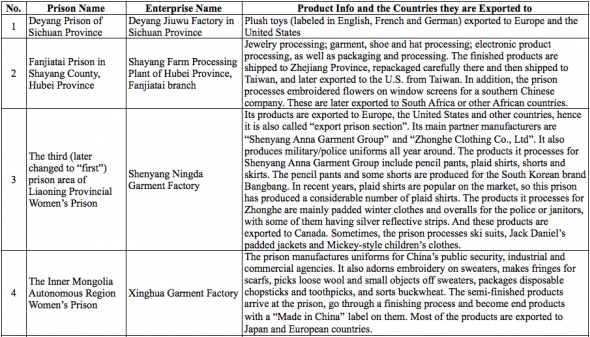
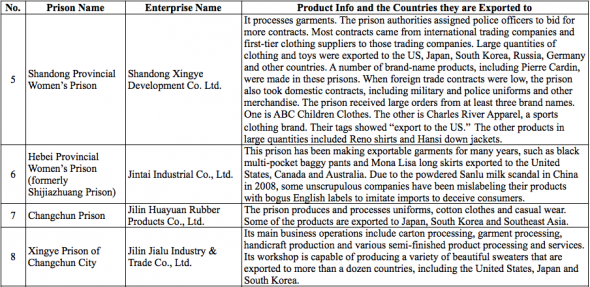

V. The Dangers and Detriments of Slave Labor Products
According to the “Investigative Report on Slave Labor in Prisons in Communist China” published on Minghui.org, there are hundreds of types of Chinese slave labor products disclosed in the past two years, covering people's food, fashion, living, traveling, recreation, makeup & beauty, wedding banquets, funerals, festivals, etc. At the same time, because many Chinese enterprises (including many enterprises engaged in export production) have business relations with the “enterprise” registered by labor camps, prisons, and detention centers, large quantities of slave labor products have been exported to over 30 countries and regions, including the U.S., Australia, India, the U.K., Japan, South Korea, Russia, Germany, Africa, Turkey, Italy, some Arab countries, Malaysia, Canada, Hong Kong, Macao and Taiwan.[251] The slave labor industry not only seriously infringes on the rights and interests of the enslaved personnel, but also causes tremendous harm to society.
1. Low-cost slavery products severely disturb the global market and interfere with the global financial order
According to data released by the United Nations’ International Labour Organization (ILO), presently the illegal profits from slave labor products have reached more than 150 billion US dollars worldwide.[252]
Also, according to the 2014 list of goods produced by child labor or forced labor released by the US Department of Labor, at least 12 of these products were from China, including bricks, Christmas decorations, coal, cotton, electronics, fireworks, footwear, garments, textiles and toys.[253] Most of these products came from China’s prisons, labor camps and detention centers.
When a large number of low-priced goods produced by unpaid forced labor are dumped into the international market, it disrupts the normal order of the international economy, weakens the competitiveness of normal products in other countries, and impacts the international labor market.
In May 2002, the US-China Security Review Committee made several recommendations to the US Congress to strengthen the implementation of the US ban on importing slave labor products from mainland China and other countries. This includes transferring from the US government to the import company the burden of proof that the products were not manufactured by prisoners or other forced labor. However, the proposal was not well implemented.
According to a report by the Central News Agency on May 11 of 2002, the US-China Security Review committee stated that the US law prohibiting the import of slave labor products from any country has not been implemented properly, and the import of these products have not been banned.
The committee pointed out the United States and Chinese Communist Party had signed a memorandum of understanding in 1992 and signed a cooperation statement in 1994 to prevent slave labor products from being exported to the United States by mainland China. However, the State Council said that the United States’ request to inspect the suspected CCP prison labor facilities under these agreements was mostly rejected or ignored by the CCP.
2. The temptation of huge profits of slave labor products further deepens the persecution of detainees and even kills them.
When China’s slave labor products were sold around the world, its profits made prison staff fiercer in persecuting the detainees. In order to accept more orders and make more profits, the prisons and the labor camp system madly force the slave workers who are being detained to work overloaded, work more than ten hours a day, or even without rest for a few days, caused many detainees to die abnormally. This part will be discussed in detail in VII, Section (1) .
Products of slave labor pose serious threats to consumers’ physical health
When consumers use Chinese slave labor products, they may not think of the potential dangers behind these beautifully packaged goods. It is also impossible to imagine how dirty the production site is.
1) Sanitary conditions of slave produced products
Let’s take the disposable chopsticks produced in mainland China as an example. Disposable chopsticks produced in China are called “hygienic chopsticks”, whose covers are printed with “Disinfected, please use with confidence”. However, according to our investigation, these so-called hygienic chopsticks are mainly made in Chinese prisons and (now-abolished) forced labor camps. In the rooms where these chopsticks are processed, fleas and lice are everywhere. The detainees are not allowed to take showers for a long period of time. Some of them are drug addicts, some have skin and/or sexually transmitted diseases. The sanitary conditions in these places are extremely terrifying.
According to Minghui.org, Yu Ming (male), the former head of a garment factory in Shenyang, Liaoning Province, was detained at the Tuanhe Re-education through Labor Dispatching Facility in Daxing District, Beijing, for practicing Falun Gong. Yu Ming wrote: “Almost every day, all the people who were re-educated through labor were forced to stay up late and get up early to work hard making money for the police guards. Most of the work was to make disposable “hygienic convenient chopsticks” for small roadside restaurants. A thin piece of paper was wrapped on the chopstick tips to count as “hygienically qualified”. The police guards would earn 6 yuan from one box of chopsticks. Each detainee made almost 3 boxes of chopsticks a day. With more than 160 detainees, each team would make the guards a profit of 2,000 to 3,000 yuan every day.”
“The room where the chopsticks were wrapped was in the dormitory of the labor camp. It was overcrowded and lice were everywhere. Chopsticks were thrown all over the place, some were even accidentally dropped into the chamber pots, but were picked up and packaged (without being washed) because under the strict surveillance of the police guards the total number of chopsticks must remain the same. Detainees were never allowed to wash their hands before packaging these chopsticks, and they were not allowed to take shower for a long period of time.
“There were drug addicts and prostitutes among those non- Falun Dafa practitioner detainees. It didn’t matter if someone had hepatitis, sexually transmitted diseases and other illnesses. There was no standard medical examination. As long as you could breathe, you had to work for the police guards, including those who had skin diseases all over their bodies. They would grab the chopsticks with their pus-covered hands. The police guards were carrying electric batons and handcuffs, walking around and watching over everyone. Whoever did not complete the work in time would be beaten and verbally abused by the police guards.”
Gong Chengxi (male), former senior student in Administrative Management major, Changping Campus, Beijing University of Political Science and Law, served as the president of the university’s student council and class president. Due to practice of Falun Gong, he was expelled by his university and detained at the Beijing dispatching facility. Gong Chengxi mentioned the “hygienic chopsticks” in his testimony on Minghui.org: “The sanitary conditions at the dispatching facility was extremely poor. For example, everyone was allowed only a few minutes to clean themselves and use the bathroom every morning and evening. Often times, when the detainees just squatted (on the toilet), they were forced to go out to line up, as the police guards were shouting orders. The guards didn’t allow us to take shower for a long time, until it was discovered that a large number of detainees had lice on their bodies. Then we were allowed to take one shower. They drove several dozen people into a bathhouse where there were only one or two faucets available, and the entire shower lasted for only a few minutes. In the summer of 2002, there was an outbreak of hepatitis in the dispatching facility.” The Dalian Labor and Re-education Institute in Liaoning Province was carrying out the same work, and they exported their chopsticks to Japan.
When making food products and clothing, workers should be without infectious diseases. However, in the CCP’s prisons, this basic rule is not followed. They produce products without trademarks such as biscuits, food, hygiene chopsticks, etc., while some detainees are drug addicts, hepatitis or HIV carriers. There are no sanitary measures, inspections or quarantines on food products, and the qualification certificates on clothing products are just for decoration.
In Yunnan Women’s Forced Labor Camp, a Falun Gong practitioner was unwilling to make “cookies”. A prison guard asked her for the reason. She replied, “Will you buy such cookies?” The guard was stunned and didn’t reply. The practitioner continued, “Sacks of flour are piled on the muddy floor, the cookie machine is covered with dust, the machine that stirs the filling is also covered with dust…can the cookies produced here meet the hygiene standards? You go to look at the bathroom: there is feces and urine everywhere, it stinks, and there is no place to set your feet. When using the bathroom, there is no towel to dry your hands, you have to just wipe your hands on your own apron and then go to wrap the cookies. Do you want to eat such cookies? I am practicing Falun Gong to cultivate truthfulness, compassion and forbearance, to be a good person. I can’t do anything that’s against reason or nature. Therefore, I can’t do this job. It’s against my conscience.”
In Inner Mongolia First Women’s Prison, each prison district had a group of people who were old-aged, fragile or ill. These people could not work in the production workshops due to liver diseases, tuberculosis or their old age. When some were removing the hair balls on the sweaters, as they had to complete the task in a short period of time, they would brush the sweaters with shoe brushes, or spit onto the sweaters to make them wet and smooth them out by using their dirty hands, so as to remove wrinkles on the sweaters. They would then fold the sweaters neatly before handing them in. Most of the products were exported to Japan and some European countries.
The following examples provide further understanding of actual sanitary conditions in mainland China’s prisons and labor camps:
A) At the Inner Mongolia First Women’s Prison, the water supply is often cut off. Sometimes the prison guards would purposely cut off the water supply to save money, and sometimes it’s due to technical failures. However, even if the water outages lasted for about 10 days, the slave production was never affected. In such cases, none of the prisoners could wash their hands after visiting the restroom, and it was even more difficult for them to take showers regularly.
When packaging chopsticks that are not straight, some of the prisoners would simply sit on them to straighten them out. When packaging toothpicks or sorting Quinoa, prisoners would use a small container or bowl as a tool. Sometimes they would use a “special container”which is a small basin that the prisoners use at night to wash their private parts.[254] The prisoners get two mugs of water every day: one at noon and one at night. They would save the mug of hot water they get at night to wash their private parts in this small basin. During the day, this small basin is used to package toothpicks or sort Quinoa. These sorted Quinoa of the highest quality was mainly for export.[255]
The times for workers to use the restroom is strictly controlled; they are only allowed to go twice during work hours, once in the morning and once in the afternoon. Those who suffer from diarrhea or feel the rush to use the toilet have to bribe the guards to go secretly without others noticing. Detainees who don’t have money for bribes sometimes hide themselves in big piles of clothes to relieve themselves without the prison guards noticing. When the apparel company inspect the clothes, they may think that the traces on the clothes are just water marks, but they are very likely urine marks.[256]
“Some of the prisoners dislike the guards’ lack of conscience and the way they make dirty money, and they have reported the truth about how chopsticks and toothpicks were packaged and how Quinoa was sorted to the related inspection departments through special channels.” However, Even if the inspectors found violations, there were often no consequences. As long as these CCP officials are well-bribed, they turn on the green light and ignore the crimes being committed.[257]
The prison guards all have a habit in common. That is, they would wash all their newly purchased clothes before wearing them. They themselves are worried that the clothes they bought might be slave labor products from a prison.[258]
B) The Hebei Province Women’s Prison and the Hebei Province Forced Labor Camp processed and packaged disposable chopsticks that are commonly used in restaurants. The prison guards would usually bring in big bags of disposable chopsticks and poured them out onto the ground, and the detainees were ordered to wrap the chopstick tips with small pieces of wrapping paper or put them into small plastic bags. They were then bundled into boxes to be delivered for sale. Although the slogans printed on the packaging boxes read “high-standard packaging, high-temperature sterilization, sanitary procedures and convenient to use”, these chopsticks had never gone through the process of high-temperature sterilization, and they were packaged together on the ground.[259]
C) In Shijiazhuang Prison, the disposable chopsticks would be piled up on the ground in the courtyard, and the nearby restroom is slightly raised from the ground. After the rain in the summer, the excrement in the restroom would overflow onto the ground. The excrement would make the bags of chopsticks wet and the chopsticks were soaked in this filthy water. However, these chopsticks would be picked up when the sun comes out and the ground dries up. The detainees would take out the chopsticks from the plastic bags and spread them out in the sun to dry. Once dried, the chopsticks would be packaged without sanitising and then sold on the market.[260]
D) The police guards at the Beijing Women’s Forced Labor Camp were very happy with work orders since they could take a percentage of the profit. So they tried hard to force the detainees to do all types of seasonal work such as packaging tea leaves, mung beans, sugar and moon cakes. There were no sanitary measures when the detainees were doing those food-related work: they didn’t wear gloves, many drug addicts did not wash their hands after using the bathroom, and most of them had illnesses. When packaging tea leaves, tea leaf pieces would drift all over the workshop and stuck to the workers’ skin. Many detainees developed skin ulcers. These packaged foods were shipped directly to market without any sanitary inspection.[261]
2) Comparison of product safety between slavery products and regular products (source: Minghui.org)[262]
Table 6.1 Comparison of product safety between slavery products and regular products
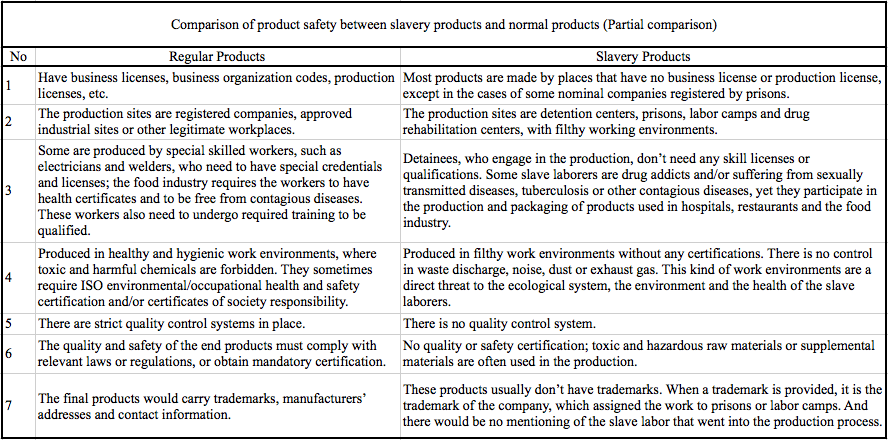
3) Health conditions of slave labourers
Partial results of contagious diseases testing on detainees:
Between January 2005 and May 2009, physical examinations for contagious diseases on 4,973 prisoners in the prison of Qingyuan City, Guangdong Province, found the HIV-positive rate to be 0.30%, syphilis-positive rate to be 0.62%, hepatitis C-positive rate to be 9.63% and hepatitis B-positive rate to be 2.03%.[263]
B) Between 2008 and 2012, physical examinations for hepatitis B (HBsAg) on 482 detainees in Xinjiang Corps’ Kuitun Prison found the positive rate to be as high as 9.2%.[264]
C) In 2007, the results of a hepatitis B test on 652 detainees in Mudanjiang City Prison, Heilongjiang Province revealed that 16.72% were HBsAg carriers.[265]
D) In 2006, AIDS, syphilis, hepatitis B and hepatitis C tests were conducted for three different groups of people in Heze City, Shandong Province. The results shown below indicate that the infectious rates among detainees were much higher than non-detainees.[266]

Figure 6.1 Screenshot of results of contagious disease testing on three groups
Table 6.2 Results of contagious disease testing on three groups

E) In 2009, Hangzhou City of Zhejiang Province conducted a hepatitis B examination for 482 [267]detainees and found the infection rate to be as high as 29% among them.
The above examples and data reveal the shocking reality behind Chinese slave labor products, and the potential harm of such goods to consumers is difficult to predict.
VII. Why does the CCP vigorously develop the slave labor industry?
According to a report released by the Australian charitable organization “Walk Free Foundation” on May 31, 2016, the Global Slavery Index 2016 pointed out that the number of people living in slavery in China was nearly 3.39 million[268], and the absolute figures rank second in the world. However, human rights experts believe that the true number of Chinese slaves may not stop there.
According to the Report on the Slave Laborers of the Chinese Communist Party’s Prisons, written by independent investigators in 2014, in prisons, detention centers and other facilities in 22 provinces, municipalities and autonomous regions in China, the CCP authorities have forced the detainees to work as slave laborers.
According to a report published on December 27, 2012 in the Daily Beast, an online magazine under Newsweek, Julie Keith of Portland, Oregon, USA found an SOS letter from a Chinese labor camp in the Halloween kit she purchased. The letter was folded eight times and tucked between two foam graves.
The letter read, “Sir, if you occasionally buy this product, please kindly resend this letter to the World Human Right Organization. Thousands people here who are under the persecution of the Chinese Communist Party Government will thank and remember you forever.” “People who work here have to work 15 hours a day without Saturday, Sunday break and any holidays. Otherwise, they will suffer torture, beat and rude remark, nearly no payment (10 yuan/month).” “People who work here suffer punishment 1-3 years averagely, but without Court Sentence. Many of them are Falun Gong practitioners who are totally innocent people, only because they have different believe to CCP. They often suffer more punishment than others.” In this unsigned letter, it was written that this grave package was produced by Unit 8, Department 2, Masanjia Labor Camp, Shenyang, Liaoning Province.[269]
As revealed in this letter, a large part of China’s slavery products dumped into the world are produced by Falun Gong practitioners who were persecuted and detained by the CCP. This is one of the purposes of the CCP to vigorously develop the slave industry:
1. It uses slave labor to persecute people of faith
From WOIPFG’s investigation, it found that among the CCP’s huge slave industry chains, Falun Gong practitioners, religious figures, human rights lawyers and other faith groups were forced to produce slave labor products. Among them, Falun Gong group was the most persecuted.
The Chinese Communist regime has exercised totalitarian rule in China. The Chinese Communist Party, which believes in atheism, uses communism as the state religion, forces the people to unite with the party. The CCP does not allow the people to have their own beliefs, or to voice their own thoughts publicly. The hundreds of thousands of Falun Gong practitioners who insisted on "truthfulness, benevolence and tolerance" became the largest faith group persecuted by the CCP. After countless Falun Gong practitioners were illegally detained in labor camps, detention centers, and prisons, the CCP used all kinds of torture, including serious slavery persecution for the purpose of the so-called transformation of Falun Gong practitioners.
Ms. Tang, currently living in San Francisco, USA, was sentenced to three and a half years in prison, due to her practicing Falun Gong. In 2009, she was detained in Guangdong Provincial Women’s Prison and forced to perform slave labor in her 60s. She packs socks every day: put a dozen socks in a bag, and pack a few hundred dozen socks per day.[270]
The Falun Gong practitioners, who were illegally detained in the Gansu Provincial Women’s Prison, had to get up at 5:00 a.m. every day and finish working at midnight. They had to do hard labor with an overwhelming workload for a long period of time.[271]
The Guangdong Provincial Women’s Prison, also known as Guangdong Jiahe Comprehensive Material General Factory in public, produces slave labor products, which are sold in Europe, South America and other regions.[272] On the surface, in the prison, everyone is required to get up at 6:00 a.m. every day, start work at 7:00 a.m. and finish work between 2:00 p.m. and 6:00 p.m. In fact, they have never finished overload work on time. When deadlines are approaching, they would work overtime until late at night every day, with no rest on Sundays, either.
According to the Report on the Investigation of the CCP’s Torturing and Killing of Falun Gong Practitioners published in 2013 by Minghui.org, among the 3,653 investigated cases of Falun Gong practitioners’ deaths due to imprisonment and persecution, 110 cases (3%) were directly caused by slave labor with excessive workloads.
Forcing Falun Gong practitioners to work as slave laborers seems to be working on the surface, without any torture devices. However, this kind of slave labor is overloading, fatal and causing suffering for many months and years, and it is carried out in extremely harsh conditions. So, slave labor is actually a long-term torture method.
The Investigation Report on the Prison Slave Labor of the CCP published by the overseas Chinese website Minghui.org presents the statistics on 36 slave labor sites in mainland China, including prisons, detention centers, drug rehabilitation centers and the now-abolished labor camps. According to this report, the people in custody in these places have been forced to work 10 to 19 hours every day. When the production workload was heavy, they would have to work overtime and were even deprived of their sleep for several consecutive days and nights. Those who refused to work or failed to fulfill their work quota have often been subjected to beatings, electric baton shocks and other forms of torture.[273]
The following graph (from minghui.org) is based on the daily “working” time of the enslaved workers. The group of slave labor sites where people were forced to “work” for 12~14 hours a day is the largest, accounting for 36.11% of the total; followed by16~18 hours, accounting for 25%; and ranked third is 14~16 hours, account for 19.44%. These three groups account for 80.56% of the 36 sites.
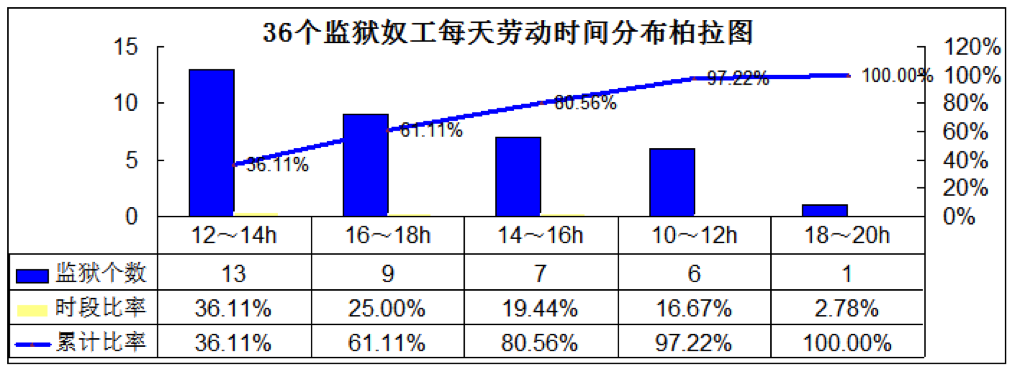
Figure 7.1 Pareto Chart of Slave Labor Working Time Distribution
[Number]
[Pareto Chart of Working Time Distribution in 36 Prisons, Labor Camps and Detention Centers]
[Number of prisons, labor camps and detention centers
Percentage (Number of prisons within the same group of working hours / 36 x 100%)
Cumulative ratio]
According to Minghui.org’s Investigation Report on the Prison Slave Labor of the CCP, in 2013, among the 3,653 investigated deaths due to persecution, in 221 cases (6% of the total number), the individuals were subjected to slave labor with excessive workloads shortly before they were persecuted to death.
Among the 3,653 cases, 47% of Falun Gong practitioners were forced to work more than 10 hours a day shortly before they were persecuted to death; 32% of Falun Gong practitioners were still forced to work after they were fatally tortured, when they were extremely weak, seriously ill and/or dying.
However, these data are collected only from the Falun Gong practitioners, who have been detained in recent years and have overcome the CCP’s Internet blockade to expose their cases on Minghui.org, so the statistics are quite limited. The situation in other prisons and detention facilities is unknown.[274] According to the Global Slavery Index 2016 published on May 31, 2016 by the Australian charity called Walk Freedom Foundation, the number of enslaved people in China was nearly 3.39 million[275]. Therefore, the number of people, who have died due to slave labor may be much larger than that.
The CCP prisons and the now-abolished labor camps (abolished in December 2013) had illegally detained Falun Gong practitioners, tortured them and forced them to do slave labor, which seriously violated the ILO Declaration on Fundamental Principles and Rights at Work, as well as the United Nations Charter, the Universal Declaration of Human Rights and the United Nations Convention against Torture (i.e. the Convention against Torture and Other Cruel, Inhuman or Degrading Treatment or Punishment), to which China is a signatory country.
2. To obtain huge profits.
The slave labor industry has generated tremendous profits to the CCP’s prison and judicial systems. As quoted from the official document titled Notice of the State Council’s Instructional Advice to the Ministry of Justice regarding Experimental Work on Structural Reform of the Prison System: “Production by prison companies has brought tremendous profits to prisons, as well as enormous benefits to prison policemen. Incomes of prison policemen are generally several or even several dozen times higher than that of average governmental employees.” “Under the supervision of Prison Law and supported by the state’s preferential policies, prison companies have made remarkable progress in their financies, with relatively good improvement in the quality of economic operations and comprehensive corporate strengths. According to statistics provided by the Ministry of Justice, from 1984 to 2001, the gross output value of all prison companies nationwide increased by more than 4 times from 2.77 billion yuan to 11.72 billion yuan; and the value of their fixed assets increased from 3.4 billion yuan to 11.6 billion yuan.”[276]
Figure 7.2 Below are several screenshots of the Notice of the State Council’s Instructional Advice to the Ministry of Justice regarding Experimental Work on Structural Reform of the Prison System[277]
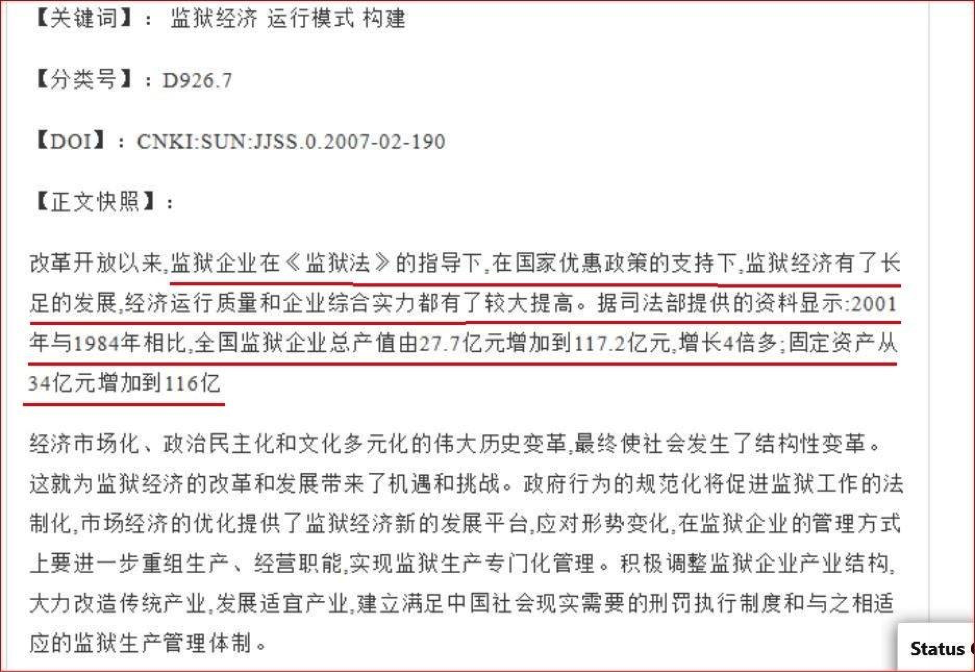
Figure 7.2 Screenshots of the Notice of the State Council’s Instructional Advice to the Ministry of Justice regarding Experimental Work on Structural Reform of the Prison System[278]
According to a report in China’s Lens magazine, “At its peak, there were more than 5,000 individuals subjected to reeducation through labor in the Masanjia Forced Labor Camp. Their unpaid labor had created enormous economic values… (Including all exported slave labor products,) the total output value was nearly 100 million yuan per year.”
Below is a tabulated comparison between normal profits and the profits from slave labor products, with information from Minghui.org.[279]
Table 7. Comparison of costs between normal and slave products:

Salaries of slave labor workers
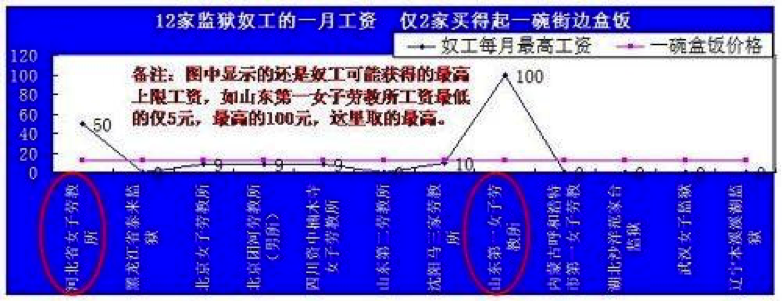
Figure 7.3. The statistics in the above graphic shows that among 12 prisons, the slave labor workers from only two of them are paid more than 12 yuan per month, which is the typical price for a lunch box in China.
Below is a summary of slave laborer salaries from 12 “slave labor factories” obtained from the archives of Minghui.org.
Table 8. Slave Laborer Salaries from 12 Slave Labor Factories in China
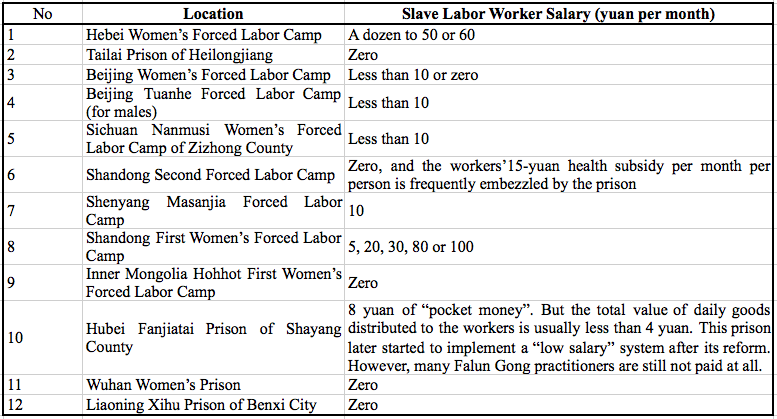
After making food products, machinery and other industrial products, many of the CCP’s prisons have turned to clothing production, and the majority of such products are exported. In May 2016, the World Bank released the “Stitches to Riches” report, which pointed out that China contributed to 41% of the world’s apparel exports and remains the largest apparel producer in the world. An unnamed apparel business insider revealed that the production of clothing from the Chinese prison system accounts for about 10% of the national garment production. That is, China’s prisons contribute to about 4% of apparel production in the entire world.
According to WOIPFG’s investigation, Zhejiang Province’s No.1, No.4, No.5 and No. 7 Prisons have established long-term collaboration with Quzhou Haolong Clothing Co., Ltd. This company has clearly stated in its advertisement that the company’s orders are mainly filled by their own factories and several prisons, with over 20,000 individuals in custody processing its products. Note that among these workers, there are Falun Gong practitioners who are illegally detained. “Our factory’s products are mainly sold on the French market (70% of all products), the US market (20%) and the domestic market (10%). On the US market, we are currently producing only a few brands which are sold under the COSCO framework.”
The United States completely banned the importation of slave labor products in 2016. However, for the great profit, the CCP’s prisons, detention centers and similar facilities are now using multiple layers of subcontractors to cover up the true origins of these products, and continue to manufacture and export slave labor products.
The table below are several examples of prison-run factories or companies disguised as regular ones in Beijing.
Table 9. Prison Enterprises and Their Addresses
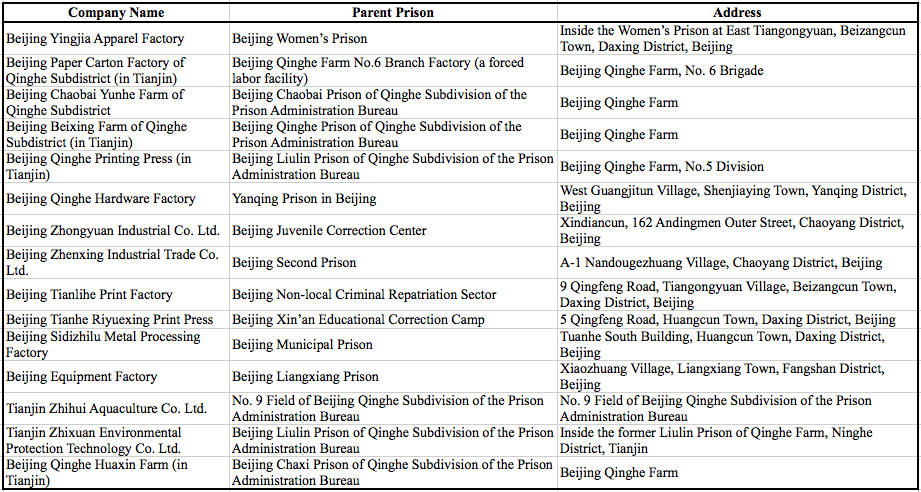
VIII. Conclusion
Cheap slave labor products impact the global market, undermine the competitiveness of normal companies and countries that value human rights. They make wealth flow to the Chinese Communist regime that abuses human rights.
This kind of slavery in Chinese prisons is a violation of Chinese law and a violation of the Universal Declaration of Human Rights, of which China is a signatory. According to Article 4 of the Universal Declaration of Human Rights, “No one shall be held in slavery or servitude; slavery and the slave trade shall be prohibited in all their forms.”
The CCP’s slave labor industry has not only seriously infringed on the personal rights and interests of the slave workers, but has also caused tremendous detriment to the society. The large-scale production and circulation of these ultra-low-cost and competitive slave labor products have made great impacts on the labor markets and different economies, resulting in bankruptcies of a large number of businesses in the same industries and disrupting the normal operations of the market economy. At the same time, the large number of people who lost their jobs as a result of this unfair competition have become a serious burden to the international society.
At the same time, the incomparable impact of the slave labor industry and huge economic profits have become a strategic weapon for the CCP to carry out its economic aggression towards the world, and to increase the CCP’s economic resources to aggravate its human rights persecution internally. More seriously, the CCP’s slave labor industry is built upon the destruction of human moral conscience. In this sense, the use of profits as bait to undermine the moral conscience of the international community is one aspect of the evil communist spectre reaching the goal of destroying humanity.
Please see related links:
Reference
-----------------------------
[181] Minghui.org. “Investigative Report on Slave Labor in Prisons in Communist China”. July 22, 2014.
http://www.minghui.org/mh/articles/2014/7/22/中共监狱奴工劳动调查报告-294957.html
[182] 2012年7月5日明慧网《湖北沙洋范家台监狱的奴工迫害(图)》
http://www.minghui.org/mh/articles/2012/7/5/湖北沙洋范家台监狱的奴工迫害(图)-259733.html
[183] 2012年7月5日明慧网《湖北沙洋范家台监狱的奴工迫害(图)》
http://www.minghui.org/mh/articles/2012/7/5/湖北沙洋范家台监狱的奴工迫害(图)-259733.html
[184] Minghui.org. “Slave Labor Persecution at Fanjiatai Prison in Shayang County, Hubei Province.” July 5, 2012.
http://www.minghui.org/mh/articles/2012/7/5/湖北沙洋范家台监狱的奴工迫害(图)-259733.html
[185] Hangzhou Z-shine industrial Co., Ltd.
http://www.zshine.com.cn/
https://www.ajinga.com/company-detail-new/1800/
[186] Hangzhou Z-shine industrial Co., Ltd.
http://www.zshine.com.cn/
https://www.ajinga.com/company-detail-new/1800/
[187] FOB Business Forum.
http://bbs.fobshanghai.com/archiver/tid-6001514.html
[188] Minghui.org. “Some Slave Labor Products from Heilongjiang Province Prisons and Labor Camps”. June 12, 2012.
http://www.minghui.org/mh/articles/2012/6/12/黑龙江省监狱、劳教所部份奴工产品(图)-258807.html
[189] Minghui.org. “Some Slave Labor Products from Heilongjiang Province Prisons and Labor Camps”. June 12, 2012.
http://www.minghui.org/mh/articles/2012/6/12/黑龙江省监狱、劳教所部份奴工产品(图)-258807.html
[190] Minghui.org. “Some Slave Labor Products from Heilongjiang Province Prisons and Labor Camps”. June 12, 2012.
http://www.minghui.org/mh/articles/2012/6/12/黑龙江省监狱、劳教所部份奴工产品(图)-258807.html
[191] Minghui.org. “Liaoning Women’s Prison: Forced Labor Until the Last Breath”. February 27, 2014.
http://en.minghui.org/html/articles/2014/2/27/145625.html
[192] Minghui.org. “Liaoning Women’s Prison: Forced Labor Until the Last Breath”. February 27, 2014.
http://en.minghui.org/html/articles/2014/2/27/145625.html
[193] Minghui.org. “Liaoning Women’s Prison Encourages Prisoners to Torture Falun Gong Practitioners”. July 2, 2016.
http://www.minghui.org/mh/articles/2016/7/2/辽宁女子监狱怂恿犯人折磨法轮功学员-330803.html
[194] Minghui.org. “Liaoning Provincial Women’s Prison Treats Falun Gong Practitioners as Slave Laborers”. November 5, 2005.
http://en.minghui.org/emh/articles/2005/11/5/66534.html
[195] Minghui.org. “Liaoning Provincial Women’s Prison Treats Falun Gong Practitioners as Slave Laborers”. November 5, 2005.
http://en.minghui.org/emh/articles/2005/11/5/66534.html
[196] Minghui.org. “The Forced Labor Persecution behind the “Jin-long-yu” (Gold Dragon Fish) Brand”. January 13, 2012.
http://en.minghui.org/html/articles/2012/1/13/130684.html
[197] Minghui.org. “Exposing the Slave Labor Products Made in Heilongjiang Tailai Prison”. February 9, 2013.
http://www.minghui.org/mh/articles/2013/2/9/曝光黑龙江省泰来监狱的奴工产品(图)-269357.html
[198] Minghui.org. “Prisons and Labor Camps in Shanghai Continue to Produce Large Quantities of Products for Export with Forced Labor”. August 10, 2007. http://en.minghui.org/emh/articles/2007/8/10/88486.html
[199] Minghui.org. “Prisons and Labor Camps in Shanghai Continue to Produce Large Quantities of Products for Export with Forced Labor”. August 10, 2007. http://en.minghui.org/emh/articles/2007/8/10/88486.html
[200] Minghui.org. “Investigative Report on Slave Labor in Prisons in Communist China”. July 22, 2014.
http://www.minghui.org/mh/articles/2014/7/22/中共监狱奴工劳动调查报告-294957.html
[201] Minghui.org. “Investigative Report on Slave Labor in Prisons in Communist China”. July 22, 2014.
http://www.minghui.org/mh/articles/2014/7/22/中共监狱奴工劳动调查报告-294957.html
[202] Minghui.org. “Investigative Report on Slave Labor in Prisons in Communist China”. July 22, 2014.
http://www.minghui.org/mh/articles/2014/7/22/中共监狱奴工劳动调查报告-294957.html
[203] Minghui.org. “Products Made with Slave Labor at the Hebei Province Women's Forced Labor Camp (Photos)”. July 12, 2012. http://en.minghui.org/html/articles/2012/7/12/134390.html
[204] Minghui.org. “Products Made with Slave Labor at the Hebei Province Women's Forced Labor Camp (Photos)”. July 12, 2012. http://en.minghui.org/html/articles/2012/7/12/134390.html
[205] Minghui.org. “Products Made with Slave Labor at the Hebei Province Women's Forced Labor Camp (Photos)”. July 12, 2012. http://en.minghui.org/html/articles/2012/7/12/134390.html
[206] Minghui.org. “Products Made with Slave Labor at the Hebei Province Women's Forced Labor Camp (Photos)”. July 12, 2012. http://en.minghui.org/html/articles/2012/7/12/134390.html
[207] Minghui.org. “Products Made with Slave Labor at the Hebei Province Women's Forced Labor Camp (Photos)”. July 12, 2012. http://en.minghui.org/html/articles/2012/7/12/134390.html
[208] Minghui.org. “Products Made with Slave Labor at the Hebei Province Women's Forced Labor Camp (Photos)”. July 12, 2012. http://en.minghui.org/html/articles/2012/7/12/134390.html
[209] The Epoch Times. June 12, 2016. “Behind the United States’ Efforts to Look for Witnesses to Slavery in China’s Prisons (2)” http://www.epochtimes.com/gb/16/6/12/n7988858.htm
[210] Minghui.org. May 19, 2010. “Record on the Persecution in the Shanghai Women’s Forced Labor Camp (1)”
http://minghui-c.org/mmh/articles/2010/5/20/223898.html
[211] Minghui.org. May 19, 2010. “Record on the Persecution in the Shanghai Women’s Forced Labor Camp (1)”
http://minghui-c.org/mmh/articles/2010/5/20/223898.html
[212] Minghui.org. March 21, 2010. “Persecution and Forced Labor at the Chongqing Women's Forced Labor Camp (Photos)”. http://en.minghui.org/html/articles/2010/3/21/115481.html
[213] Minghui.org. March 21, 2010. “Persecution and Forced Labor at the Chongqing Women's Forced Labor Camp (Photos)”. http://en.minghui.org/Html/articles/2010/3/21/115481.html
[214] Minghui.org. March 21, 2010. “Persecution and Forced Labor at the Chongqing Women's Forced Labor Camp (Photos)”. http://en.minghui.org/html/articles/2010/3/21/115481.html
[215] Minghui.org. March 21, 2010. “Persecution and Forced Labor at the Chongqing Women's Forced Labor Camp (Photos)”. http://en.minghui.org/html/articles/2010/3/21/115481.html
[216] Minghui.org. August 2, 2007. “Shaanxi Province’s Xifeng Brewery and Xifeng Wine.” http://www.minghui.org/mh/articles/2007/8/2/160018.html
[217] Minghui.org. September 12, 2007. “Forced Labor Camps in Shanghai Enslave Inmates to Produce Toys for Export (Photos).”
http://en.minghui.org/emh/articles/2007/9/12/89489.html
[218] Minghui.org. September 12, 2007. “Forced Labor Camps in Shanghai Enslave Inmates to Produce Toys for Export (Photos).”
http://en.minghui.org/emh/articles/2007/9/12/89489.html
[219] Minghui.org. December 23, 2007. “Xinkaipu Forced Labor Camp: Conditions the International Community Cannot Imagine.” http://en.minghui.org/emh/articles/2007/12/23/92382.html; http://www.minghui.org/mh/articles/2007/12/7/167917.html
[220] Minghui.org. December 23, 2007. “Xinkaipu Forced Labor Camp: Conditions the International Community Cannot Imagine.” http://en.minghui.org/emh/articles/2007/12/23/92382.html; http://www.minghui.org/mh/articles/2007/12/7/167917.html
[221] Minghui.org. November 05, 2006. “Exposing the Slave Labor of Falun Gong Practitioners in Shandong Province's 1st Forced Labor Camp.” http://en.minghui.org/emh/articles/2006/11/5/79650.html
[222] Minghui.org. January 21, 2013. “Down Coats Made by Slave Labor in Masanjia Forced Labor Camp”.
http://en.minghui.org/html/articles/2013/1/21/137196.html
[223] The Daily Beast. December 27, 2012. “Are Your Christmas Gifts Made in the Chinese Gulag?”
http://www.thedailybeast.com/are-your-christmas-gifts-made-in-the-chinese-gulag
[224] Minghui.org. July 30, 2007. “Made in China by Forced Labor.” http://en.minghui.org/emh/articles/2007/7/30/88152.html
[225] Minghui Weekly Magazine. April 10, 2015. “Arowana Brand uses forced labor products.” http://zhoubao.minghui.org/mh/haizb/348/D07/14732/“金龙鱼”使用监狱奴工产品.html
[226] China Commodity Net. November 22, 2006. “Company profile: Baoding Jiuwang Plastic Packaging Co., Ltd.”
http://ccn.mofcom.gov.cn/1036793
[227] China Supplier Directory. “Company Profile - Xinjiang Tianshan Wooltex Stock Co., Ltd.” http://www.12864.tradebig.com/
[228] Minghui.org. March 14, 2004. “Xinjiang Tianshan Wooltex Stock Corporation, Ltd. Joins Labor Camps and Prisons to Persecute Falun Gong Practitioners -- Bloody Slave Labor Behind Internationally Renowned Brands”. http://en.minghui.org/emh/articles/2004/3/14/46044.html
[229] Minghui.org. March 14, 2004. “Xinjiang Tianshan Wooltex Stock Corporation, Ltd. Joins Labor Camps and Prisons to Persecute Falun Gong Practitioners -- Bloody Slave Labor Behind Internationally Renowned Brands”. http://en.minghui.org/emh/articles/2004/3/14/46044.html
[230] Minghui.org. March 14, 2004. “Xinjiang Tianshan Wooltex Stock Corporation, Ltd. Joins Labor Camps and Prisons to Persecute Falun Gong Practitioners -- Bloody Slave Labor Behind Internationally Renowned Brands”. http://en.minghui.org/emh/articles/2004/3/14/46044.html
[231] Minghui.org. March 14, 2004. “Xinjiang Tianshan Wooltex Stock Corporation, Ltd. Joins Labor Camps and Prisons to Persecute Falun Gong Practitioners -- Bloody Slave Labor Behind Internationally Renowned Brands”. http://en.minghui.org/emh/articles/2004/3/14/46044.html
[232] Minghui.org. March 14, 2004. “Xinjiang Tianshan Wooltex Stock Corporation, Ltd. Joins Labor Camps and Prisons to Persecute Falun Gong Practitioners -- Bloody Slave Labor Behind Internationally Renowned Brands”. http://en.minghui.org/emh/articles/2004/3/14/46044.html
[233] Minghui.org. March 14, 2004. “Xinjiang Tianshan Wooltex Stock Corporation, Ltd. Joins Labor Camps and Prisons to Persecute Falun Gong Practitioners -- Bloody Slave Labor Behind Internationally Renowned Brands”. http://en.minghui.org/emh/articles/2004/3/14/46044.html
[234] Minghui.org. January 23, 2013. “Forced Labor in China's Prison System.” http://en.minghui.org/html/articles/2013/1/23/137216.html
[235] Minghui.org. August 03, 2012. “Products Made Using Slave Labor in Qian’an Detention Center, Hebei Province.”
http://en.minghui.org/html/articles/2012/8/3/134771.html
[236] Minghui.org. August 03, 2012. “Products Made Using Slave Labor in Qian’an Detention Center, Hebei Province.”
http://en.minghui.org/html/articles/2012/8/3/134771.html; http://www.minghui.org/mh/articles/2012/7/25/河北省迁安市看守所的奴工产品-260722.html
[237] Minghui.org. August 03, 2012. “Products Made Using Slave Labor in Qian’an Detention Center, Hebei Province.”
http://en.minghui.org/html/articles/2012/8/3/134771.html
[238] Minghui.org. September 13, 2013. “Dark Secrets Behind Flashy Merchandise (Part 1) – Slave Labor Products by Sichuan Province Women’s Prison”. http://en.minghui.org/html/articles/2013/9/13/141981.html
[239] Minghui.org. September 13, 2013. “Dark Secrets Behind Flashy Merchandise (Part 1) – Slave Labor Products by Sichuan Province Women’s Prison”. http://en.minghui.org/html/articles/2013/9/13/141981.html
[240] Minghui.org. October 11, 2013. “Dark Secrets Behind Flashy Merchandise – Slave Labor Products by Sichuan Province Women’s Prison (Part 2)”. http://en.minghui.org/html/articles/2013/10/11/142653.html
[241] Minghui.org. October 17, 2013. “Dark Secrets Behind Flashy Merchandise – Slave Labor Products by Sichuan Province Women’s Prison (Part 3).” http://en.minghui.org/html/articles/2013/10/17/142787.html
[242] Minghui.org. June 2, 2012. “Forced Labor Products made in Yunnan Province’s Prisons and Forced Labor Camps.”
http://www.minghui.org/mh/articles/2012/6/2/云南监狱、劳教所的奴工产品(图)-258382.html
[243] Minghui.org. June 2, 2012. “Forced Labor Products made in Yunnan Province’s Prisons and Forced Labor Camps.”
http://www.minghui.org/mh/articles/2012/6/2/云南监狱、劳教所的奴工产品(图)-258382.html
[244] Minghui.org. June 2, 2012. “Forced Labor Products made in Yunnan Province’s Prisons and Forced Labor Camps.”
http://www.minghui.org/mh/articles/2012/6/2/云南监狱、劳教所的奴工产品(图)-258382.html
[245] Minghui.org. May 30, 2012. “Slave Products made in Hewan Town Forced Labor Camp”.
http://www.minghui.org/mh/articles/2012/5/30/武汉何湾劳教所的奴工产品(图)-258251.html
[246] Minghui.org. May 30, 2012. “Slave Products made in Hewan Town Forced Labor Camp”.
http://www.minghui.org/mh/articles/2012/5/30/武汉何湾劳教所的奴工产品(图)-258251.html
[247] Minghui.org. July 30, 2007. “Made in China by Forced Labor.” http://en.minghui.org/emh/articles/2007/7/30/88152.html
[248] Minghui.org. June 2, 2012. “Forced Labor Products made in Yunnan Province’s Prisons and Forced Labor Camps.”
http://www.minghui.org/mh/articles/2012/6/2/云南监狱、劳教所的奴工产品(图)-258382.html
[249] Minghui.org. “Investigative Report on Slave Labor in Prisons in Communist China”. July 22, 2014.
http://www.minghui.org/mh/articles/2014/7/22/中共监狱奴工劳动调查报告-294957.html
[250] Minghui.org. “Investigative Report on Slave Labor in Prisons in Communist China”. July 22, 2014.
http://www.minghui.org/mh/articles/2014/7/22/中共监狱奴工劳动调查报告-294957.html
[251] Minghui.org. “Investigative Report on Slave Labor in Prisons in Communist China”. July 22, 2014.
http://www.minghui.org/mh/articles/2014/7/22/中共监狱奴工劳动调查报告-294957.html
[252] International Labour Organization. May 20, 2014. “ILO says forced labour generates annual profits of US$ 150 billion”.
http://www.ilo.org/global/about-the-ilo/newsroom/news/WCMS_243201/lang--en/index.htm
[253] The US Department of Labor. December 1, 2014. “List of Goods Produced by Child Labor or Forced Labor”.
https://www.dol.gov/ilab/reports/pdf/TVPRA_Report2014.pdf
[254] Minghui.org. March 17, 2012. “Atrocities Behind the Products Made by Slave Labor in Inner Mongolia Women’s Prison.”
http://en.minghui.org/html/articles/2012/3/17/132139.html
[255] Minghui.org. March 17, 2012. “Atrocities Behind the Products Made by Slave Labor in Inner Mongolia Women’s Prison.”
http://en.minghui.org/html/articles/2012/3/17/132139.html
[256] Minghui.org. March 17, 2012. “Atrocities Behind the Products Made by Slave Labor in Inner Mongolia Women’s Prison.”
http://en.minghui.org/html/articles/2012/3/17/132139.html
[257] Minghui.org. March 17, 2012. “Atrocities Behind the Products Made by Slave Labor in Inner Mongolia Women’s Prison.”
http://en.minghui.org/html/articles/2012/3/17/132139.html
[258] Minghui.org. March 17, 2012. “Atrocities Behind the Products Made by Slave Labor in Inner Mongolia Women’s Prison.”
http://en.minghui.org/html/articles/2012/3/17/132139.html
[259] Minghui.org. April 6, 2012. “The Truth about Products Made Under Slave Labor Conditions in Hebei Province Women's Prison and Forced Labor Camp”. http://en.minghui.org/html/articles/2012/4/6/132570.html
[260] Minghui.org. April 6, 2012. “The Truth about Products Made Under Slave Labor Conditions in Hebei Province Women's Prison and Forced Labor Camp”. http://www.minghui.org/mh/articles/2012/3/14/河北省女子监狱、女子劳教所奴工产品的真面目-254218.html
[261] Minghui.org. “Forced Labor Camps Sell Products Made by Suffering Detainees”. April 2, 2013.
http://en.minghui.org/html/articles/2013/4/2/138739.html
[262] Minghui.org. July 22, 2014. “Investigative Report on Slave Labor in Prisons in Communist China”. http://www.minghui.org/mh/articles/2014/7/22/中共监狱奴工劳动调查报告-294957.html
[263] “Occupation and Health”, January 2010, Vol. 26, No. 2. “Survey of Conditions of AIDS, Syphilis, Hepatitis C, Hepatitis B Infection among Different Population Groups in Qingyuan City”. Authors: Li Changhai, Chen Liping, Chen Wenqing, Luo Wenling, Tang Wei, apricot, Cao Xiaoyue, Liu Aiying
WOIPFG archived links:
http://www.zhuichaguoji.org/cn/images/medicalarticles/10801.pdf
http://www.zhuichaguoji.org/cn/images/medicalarticles/10802.pdf
http://www.zhuichaguoji.org/cn/images/medicalarticles/10803.pdf
http://www.zhuichaguoji.org/cn/images/medicalarticles/10804.pdf
[264] “Medical Information” June 2013, Vol. 26, No. 6 (the second half of the month). ‘Prison Inmates Hepatitis B Survey and Prevention Measures”. Author: Zhu Xiaoming (Guizhou Province Department of Radiology, Xixian Central Hospital, Qianxi, Guizhou Province 551500)
WOIPFG archived link: http://www.zhuichaguoji.org/cn/images/medicalarticles/110.pdf
[265] “Chinese Journal of Ethnomedicine and Ethnopharmacy” August 3, 2008. “One City’s Detainee Hepatitis B Virus Infection Survey”. Authors: Su Xixin, Cong Junzi (Mudanjiang Municipal Center for Disease Control and Prevention, Mudanjiang, Heilongjiang Province, 57011; Hongqi Hospital affiliated with Mudanjiang Medical University, Heilongjiang Province, Mudanjiang, 157000)
WOIPFG archived link: http://www.zhuichaguoji.org/cn/images/medicalarticles/111.pdf
[266] “China Preventive Medicine”. April 2008 Vol. 9, No. 4. “Result Report on AIDS, Syphilis, Hepatitis B and Hepatitis C Tests on Three Groups” Authors: Chen Zhongquan, Liu Qilin, Li Yiwei (Heze Municipal Center for Disease Control and Prevention, Shandong Province 274010).
WOIPFG archived link: http://www.zhuichaguoji.org/cn/images/medicalarticles/112.pdf
[268] The Walk Free Foundation. May 31, 2016. “The Global Slavery Index 2016”.
https://www.globalslaveryindex.org/country/china/
[269] The Daily Beast. December 27, 2012. “Are Your Christmas Gifts Made in the Chinese Gulag?”
http://www.thedailybeast.com/are-your-christmas-gifts-made-in-the-chinese-gulag
[270] July 24, 2017. Minghui.org. “Guangdong Provincial Women's Prison Persecution (Part 2)”.
https://www.minghui.org/mh/articles/2017/7/24/ Guangdong Province Women's Prison Persecution Documentary (below)-351340.html
[271] August 29, 2004. Minghui.org. “Gansu Provincial Women’s Prison Persecution of Dafa Disciples.” http://www.minghui.org/mh/articles/2004/8/29/82860.html
[272] July 21, 2017. Minghui.org. “Guangdong Province Women's Prison Persecution (Part 2)”.
http://www.minghui.org/mh/articles/2017/7/21/ Guangdong Province Women's Prison Persecution Documentary (middle)-351339.html
[273] July 22, 2014. Minghui.org. “Investigation Report on the Prison Labor of the Chinese Communist Party”. http://www.minghui.org/mh/articles/2014/7/22/CCP Prison Labor Labor Investigation Report -294957.html
[274] July 22, 2014. Minghui.org. “Investigation Report on the Prison Labor of the Communist Party of China”. http://www.minghui.org/mh/articles/2014/7/22/CCP Prison Labor Labor Investigation Report -294957.html
[275] The Global Slavery Index report for 2018.
https: //www.globalslaveryindex.org/country/china/
[276] Zaidian.com. “Notice of the State Council’s Instructional Advice to the Ministry of Justice regarding Experimental Work on Structural Reform of the Prison System”. December 10, 2016. http://www.zaidian.com/jiaoshiwenzhang/657047.html
[277] Zaidian.com. “Notice of the State Council’s Instructional Advice to the Ministry of Justice regarding Experimental Work on Structural Reform of the Prison System”. December 10, 2016. http://www.zaidian.com/jiaoshiwenzhang/657047.html
[278] Zaidian.com. “Notice of the State Council’s Instructional Advice to the Ministry of Justice regarding Experimental Work on Structural Reform of the Prison System”. December 10, 2016. http://www.zaidian.com/jiaoshiwenzhang/657047.html
[279] Minghui.org. “Investigative Report on Slave Labor in Prisons in Communist China”. July 22, 2014. http://www.minghui.org/mh/articles/2014/7/22/中共监狱奴工劳动调查报告-294957.html











